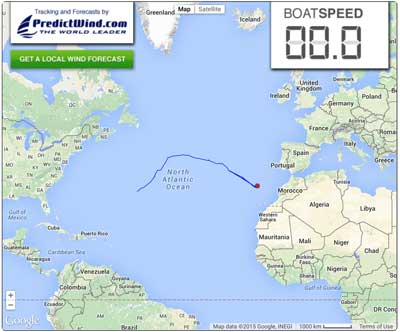Top Ten Transatlantic Sailing Gear Review
14/12/15 05:59 Filed in: Offshore sailing | Electronics
Crossing the Atlantic ocean is a real test of both crew and gear. This year we have done two Atlantic crossings and tested the gear quite a lot!! Here is a round-up of the gear aboard Distant Shores II that contributed the most to our passages… comfort, safety, performance etc…
1 - Downwind pole
Our Selden downwind pole was great. It's made of carbon fibre so its light and easy to set. We used it for almost the whole passage. Having a strategy for going dead downwind is essential for a successful trade wind passage. (Blog Here)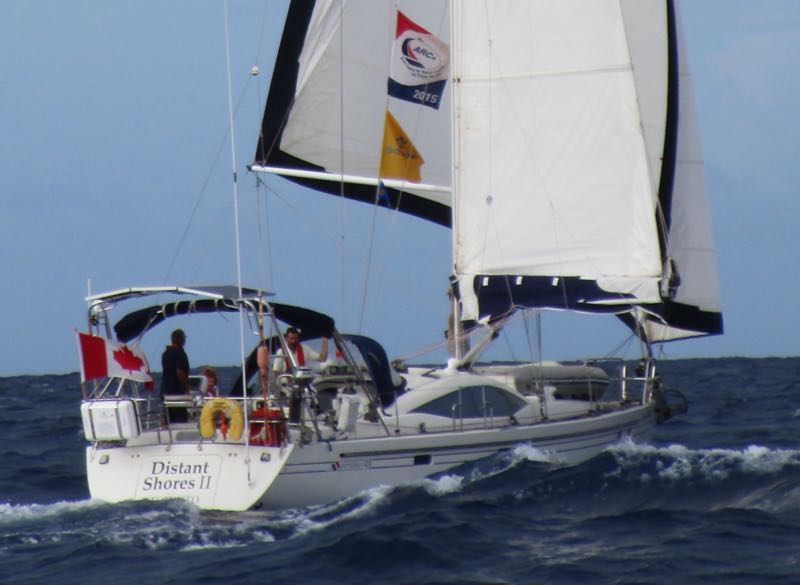
2 - Raymarine Plotter with Lighthouse software
I've written before about the ability to upgrade the Raymarine Plotters. In this upgrade the AIS display is much improved with icons showing the type of vessel (note the ship's boxy icon below). Nice! This is our custom display set up for the helmsman. Course-up plotter with radar overlay on the left, and nice big wind display on the right showing both true and apparent wind.
3 - Autopilot steering with "relative wind" heading
We hand steered for less than 1 day total of the 11 days on this crossing. "Auto" steered perfectly for the rest. We used the Raymarine "Wind" relative setting and it was excellent. When steering nearly dead downwind, even a wind shift of 20 degrees could mean you might jibe. The relative wind setting on the autopilot means the system will keep adjusting the heading so that isn't a danger. It worked very well! Note we are sailing nearly dead downwind!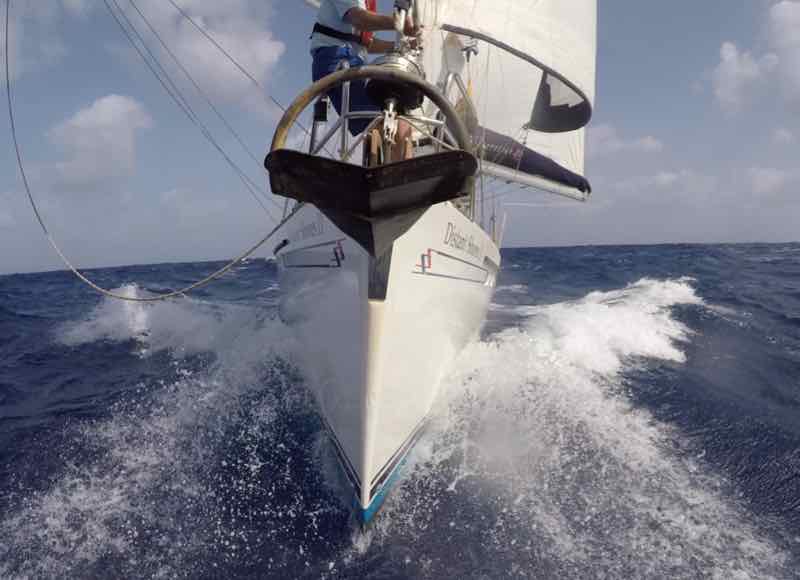
4 - Solar Panels
Our new solar arch provided a lot of the power for the crossing. We still ran the generator 1-3 hours per day, but we were not trying to conserve power either. We ran radar whenever we wanted to check on squalls, everyone ran their devices etc. The solar power was also a reassuring backup in case we had a problem with our generator.
5 - Pressure Cooker
Sheryl cooked up some quite amazing meals and made a fair bit of use of the pressure cooker. Quick and easy. Our model is a very tough stainless unit we bought in France while travelling the canals. Great for one-pot meals! With its locking lid it's safe to use in rough conditions. It reduces cooking time and reduces heat in the boat.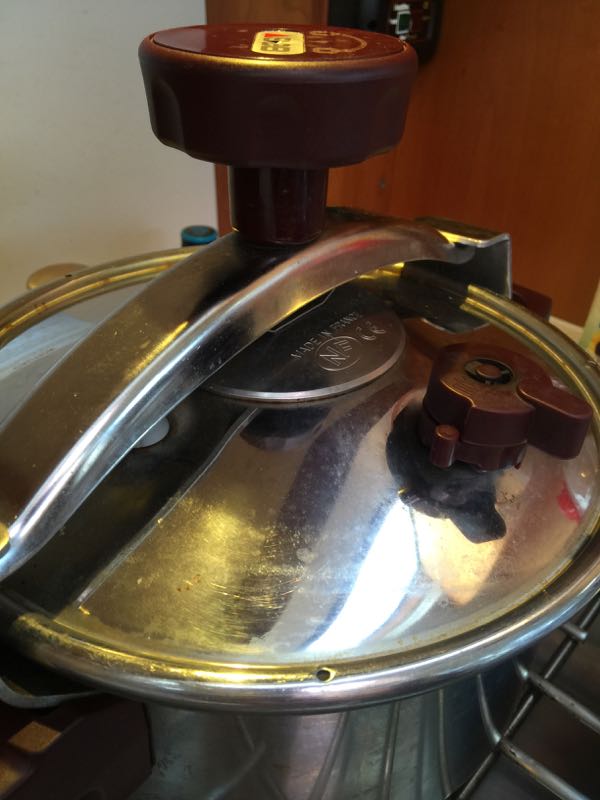
6 - Headlight
Actually my headlight is terrible - but our crew Anthony had this Navisafe headlamp and it was by far the best I've seen - powerful, waterproof with both a spot and wide beam.
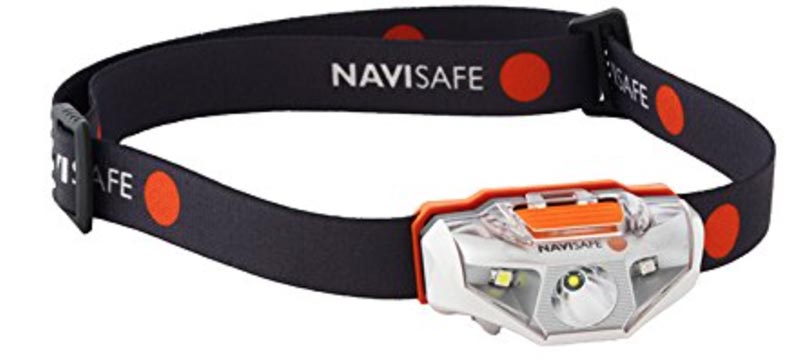
7 - IridiumGO
Communications were the best we have ever had for a passage. Email, weather, texts, phone calls, weather routing etc… Predictwind review to follow! Check out our IridiumGO review here.

8 - Life-raft
Thankfully not used but it is the peace-of-mind knowing you have the best safety gear, especially when going so far offshore. Check them out on Ocean Safety.com
9 - Lifeproof case for my iPhone
While everyone else worried about their phones on the crossing, I didn't since my new case is waterproof! Works great!! Waterproof to 6 feet/2 meters but we didn't test this :-) Here it is on Amazon
10 - Cabin fans
Our Caframo fans have been great - especially on a passage when we don't want to open hatches. Its hot sailing the trade wind route and the fans helped us keep cool…Comments
Storm Spinnaker - downwind rig with twin headsails + mainsail
04/12/15 10:45 Filed in: Offshore sailing
Sailing east to west across the Atlantic means following winds almost all the way. On this passage we have just spent the entire 11 days nearly dead downwind. Only when the occasional squall went by did the wind shift even as far as 30 degrees, so to steer our rhumb line course we would have the wind from 150 degrees to 180 degrees dead downwind for the whole way. If you are planning this passage you definitely need to have a good strategy for sailing downwind. Of the 60 boats sailing across the Atlantic with us in the ARC-Plus this year, there were a few who didn't have a good downwind strategy, and all regretted it! It's frustrating to have to sail off at a broad reach, adding so many miles and days to the crossing.
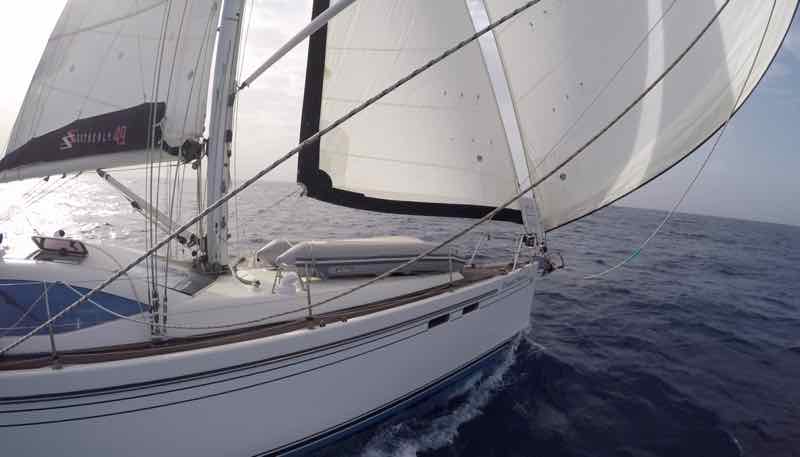
We ran for over 95 percent of the crossing with what we call our "storm spinnaker" and it was very effective! We were near the front of the pack - 9th of 60 boats to finish, and the first monohull under 50 feet. We exceeded our predicted 12-13 days time, finishing in 11 days 7 hours! Whoa!!
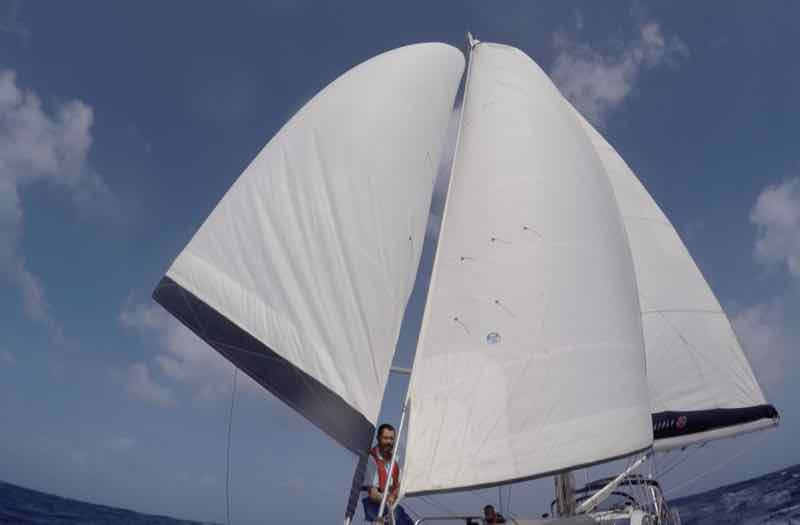
Storm Spinnaker
What's a storm spinnaker? We do not carry an actual spinnaker, but use our two jibs to make our best imitation of a spinnaker shape, poling the genoa out on the windward side and using the smaller jib on the other side in behind the mainsail. Looking at it from the bow you can see the two headsails form a shape nearly the same as a single curved sail.
Twin Headsails
I really like our Solent rig with two headsails on furlers ready to go. But if you don't have that, there are still some possible alternatives to fly twin headsails this way. A "Solent stay" can be added just inboard of the main forestay, and you can hank on a smaller jib. We added this rig to Two-Step many years ago, and it was how we fell in love with the twin headsails. Here is a great article in Sail Magazine that details how best to add a Solent Stay.
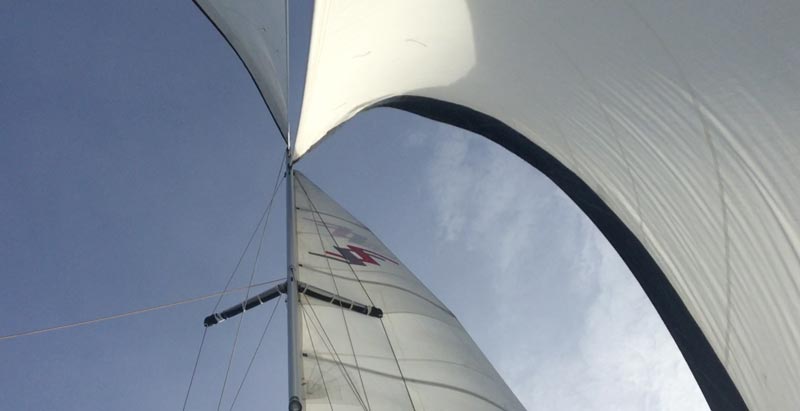
Collapsing Sails?
Sailing nearly downwind we wondered if the smaller jib would be blanketed by the main, and might collapse? After all we were heading 165-175 degrees off the true wind. In the event, we found that by trimming the sails we were able to get maximum speed, comfort and reduced rolling, and the sails didn't collapse. For example, we set our Raymarine Autopilot to steer a relative heading to the wind of 165 degrees. We set the pole and genoa well forward catching as much wind as we could. But between the main (to port) and the genoa (on starboard) there is still as gap. So we set the second jib to catch that wind, making the two jibs look somewhat like a spinnaker. We found it worked best if the smaller jib was sheeted in a quite a bit tighter. It will both help catch the wind, and stop the rolling motion in the big Atlantic swells. In the picture below you can see the jib (on the right of the photo) is sheeted well in.
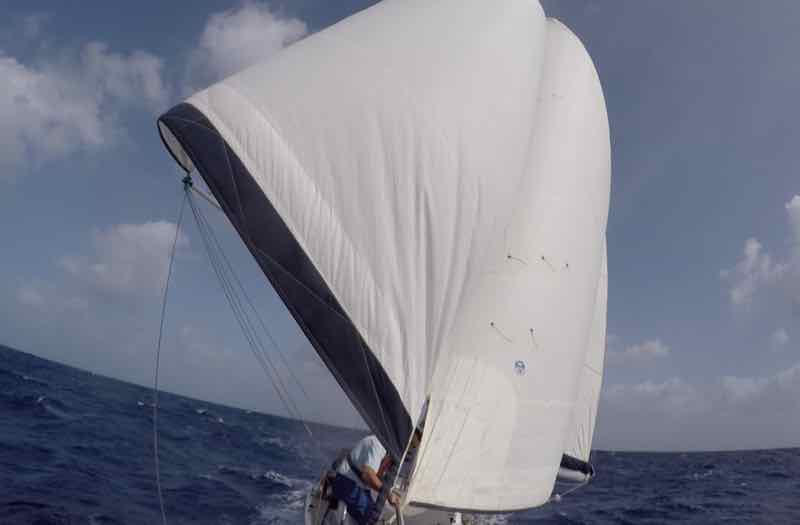
What about a real Spinnaker?
Certainly this can come in handy - but almost all will take down the spinnaker at night, and overall I would estimate they were flown by most boats for just 1-2 days. We had our rig up for the entire time! Spinnakers are a great option, but first of all I would recommend a good setup for poling out the genoa and running the main in a wing-and wing configuration.
Reefable
Our two jibs are on independent Furled furlers, which means we can reef in a little or a lot very easily. We left the furling line for the larger genoa on the winch, and even at night one of us on watch could reef down in seconds if a squall came up. When gusts came up to 30 knots we found we were fine with just a 20-30 percent reduction to the genoa. Any higher and we would reef up the jib a bit. We also were heading downwind so a true wind of 30 was barely 21 or so relative to our downwind course.
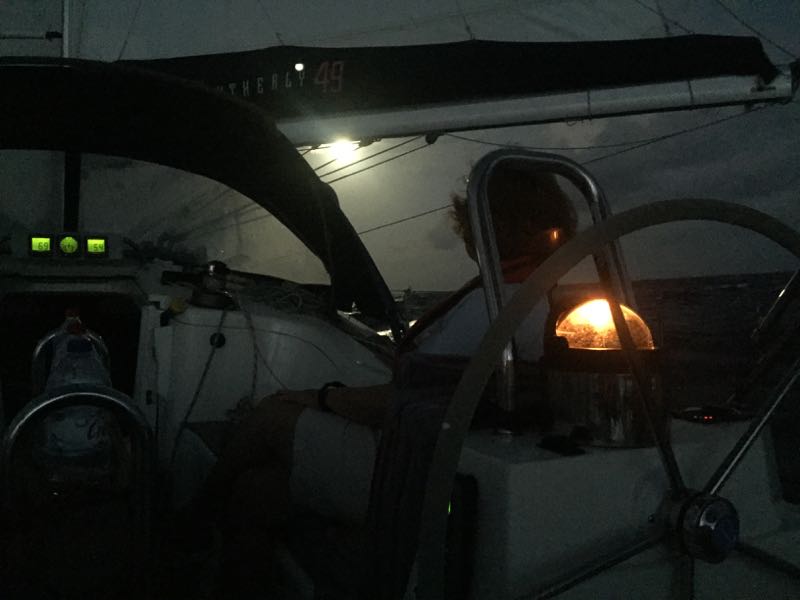
Lock the Downwind Pole in Place
Whenever we use the downwind pole we make sure its locked in place. We rig up 3 lines to the outer pole end…
1) Topping lift - pole height is adjusted by a topping lift to the outer pole end
2) Foreguy - this line is permanently rigged on the foredeck and runs back to the cockpit. When we need it we run it to the pole end to hold it forward.
3) Afterguy - we run the third line from the pole aft to a midships cleat
With these three line the pole end is completely controllable and held in place. If we need to reef the jib away we can just reef the sail in leaving the pole out in position. No worries!
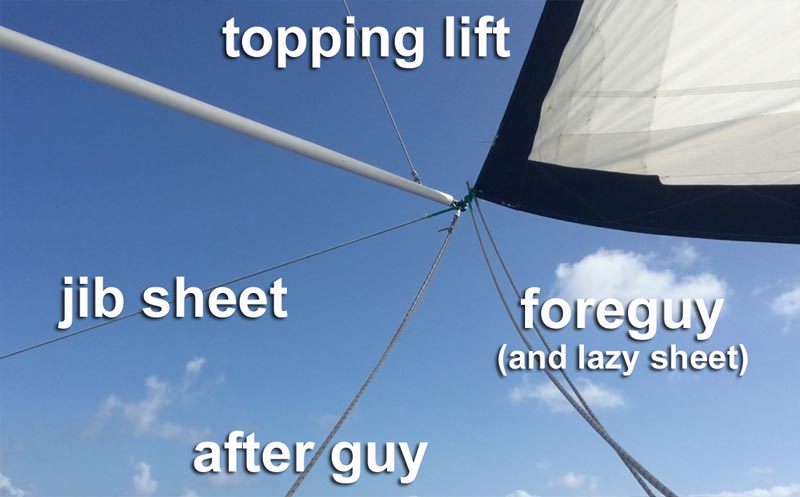
Main Boom Preventer
Running downwind we have the main boom all the way out … and ran a preventer to stop accidental jibes. This means we ran a line from the very end of the boom forward to the bow so the boom couldn't swing across if the wind got behind the sail. In fact it is quite easy for a big wave to push the transom and you find the boat swerving around suddenly heading off 30 degrees… a jibe is all to easy.
We actually had some difficulty with this and the first time we jibed the preventer didn't hold it!! We had a crash jib and broke the mainsheet and traveller cars. What went wrong?
Back when we sailed Two-Step, our Classic 37 cutter, the mast didn't have swept back spreaders. This meant you could put the boom out further, nearly at right angles to the hull, and the angle on the preventer was very effective. Now with many boats like ours having swept-back spreaders you can't get the boom as far forward. See below how the boom on Distant Shores II is not all the way out, and therefore the angle to the bow will mean the preventer must be tight and strong to hold the boom against a jibe.

Our original setup for the preventer was just not tight enough, and had too much stretch in the system. You see it on the right of the photo below running forward and coming over the lifelines, another reason it couldn't be tight enough when rigged this way.
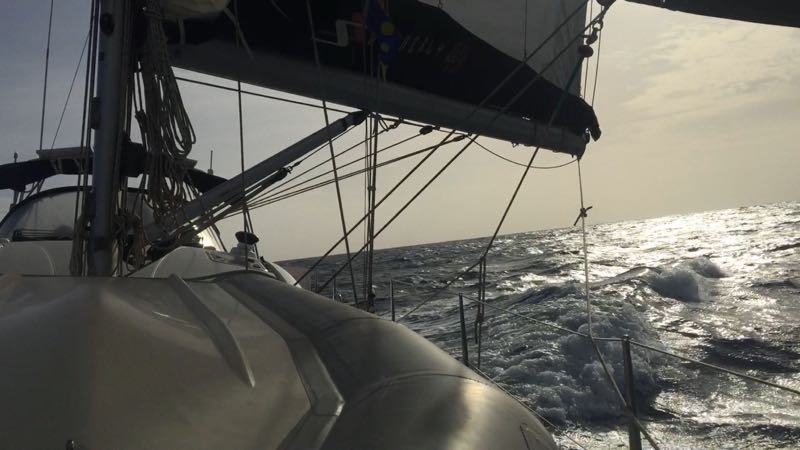
When the wind got behind the main, the preventer held a little, then stretched and the boom swung across anyway. Crash Jibe! Results below as we broke the mainsheet and the two blocks on the traveller.

An Improved Preventer
We carry spare blocks and plenty of rope so in just 15 minutes we were up and sailing again. But we wanted to improve the preventer to guarantee no more jibes. The solution was to use a heavier non-stretch sheet for the preventer, and to bring it back to a cockpit winch so it could be tensioned up.
If your rig is like ours with swept-back spreaders, you might be able to do as we did. Run the preventer forward to the bow around the bow cleat then back to the cockpit on a winch.
Enjoy Downwind Sailing
Whichever rig you choose, gennaker, spinnaker, twin jibs, or something like ours with main and twin jibs, do not overlook the need for a good versatile downwind rig. Especially for the classic trade wind passages you need to be able to do something to catch those lovely warm breezes and enjoy sailing downwind.
ARC + Life
04/11/15 02:48 Filed in: Offshore sailing
Getting ready!!! We will be setting sail on Sunday for the first 800 mile leg across the Atlantic to the Cape Verde Islands, and whenever a big passage is coming up we naturally have a lot of preparation. There seems to be an ever growing list of things to accomplish. This is especially the case since we entered in the ARC+ rally, so the departure date is not flexible as when we set off on our own. So here's a day in the "Life" of ARC+ aboard Distant Shores II.
Lifelines
Today we are replacing our lifelines! On the passage from Madeira we noticed one of the lower lines were nearly broken where it went through the stanchion. Goes to show - you need to look quite carefully at the hidden parts - in this case probably weakened when we hung a fender on that point on a very "swelly" day in Madeira's Funchal marina.
We are replacing all the lifelines and also changing them. The picture shows our 4mm lower which we will replace with the same spec. But the uppers will be replaced with 5mm wire for more strength (they were also 4mm)
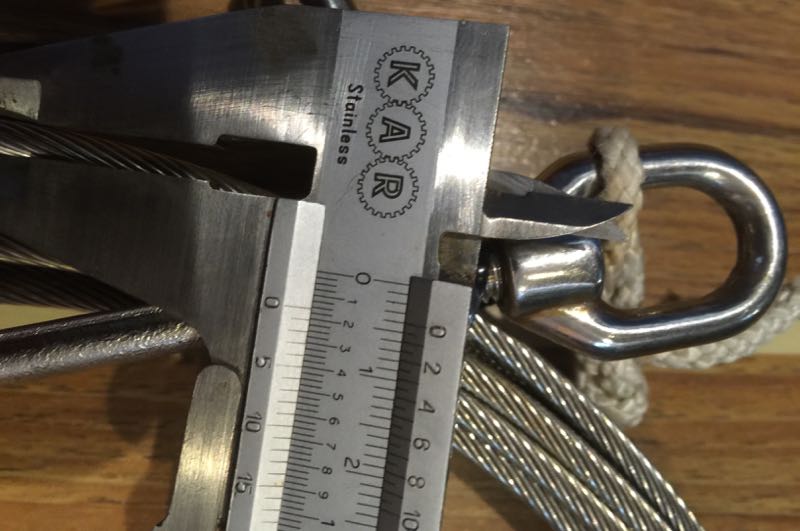
Liferaft
Our new liferaft is arriving today, so we will have to fit it to the bracket on the stern rail. It might fit easily (haha that never seems to happen :-) but you never know. It is an Ocean Safety "Ocean ISO9650" six person liferaft.
Lifesaving
Checking over our flares and emergency equipment… good idea to reread the instructions for the flares as they are often not at all intuitive.
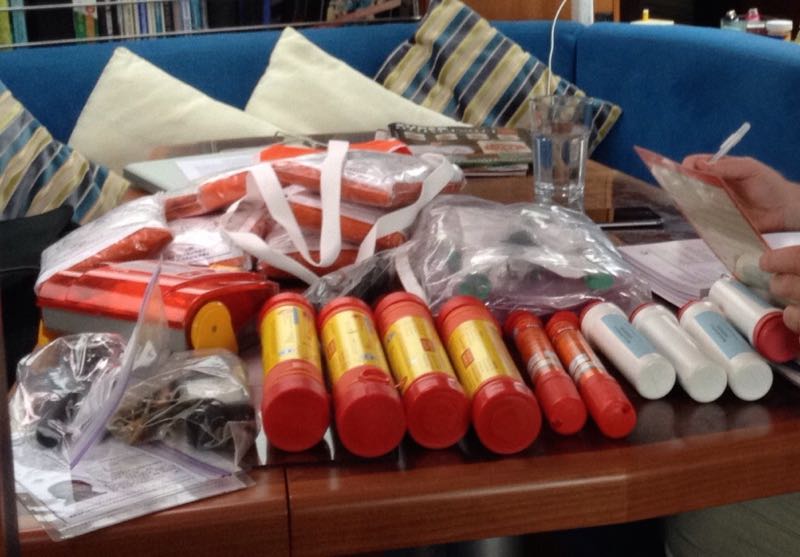
Lifejackets
The ARC has a requirement that lifejackets be fitted with face shields, so we will pack these into the lifejackets… very fashionable?
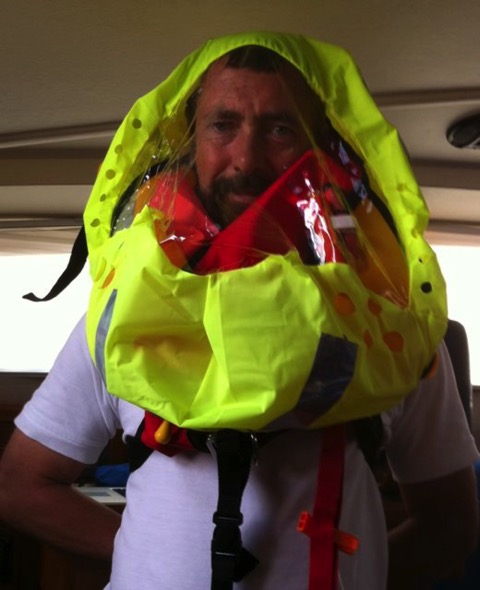
Test Sailing
Today we got off the dock and got the crew out for a test sail. Longtime Maltese friend Anthony (racing sailor and expert rigger) was happy at the helm getting the feel of Distant Shores II.
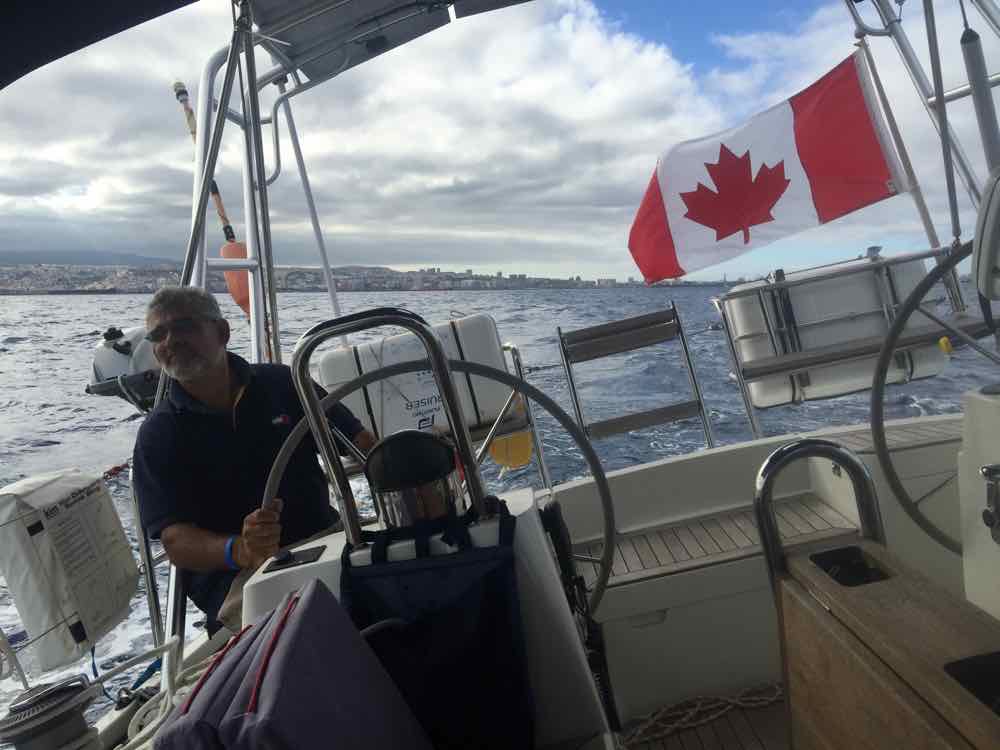
With light following winds forecast for the first leg to Cabo Verde Islands we wanted to test our new downwind rig. The main is out to starboard with a preventer. The genoa is out on our carbon pole. We wanted to also use our smaller jib out to starboard so we put a new fitting on the boom so we could use a snatch block and run a temporary sheet - essentially using the main boom as a pole to hold the jib out. Working great!!
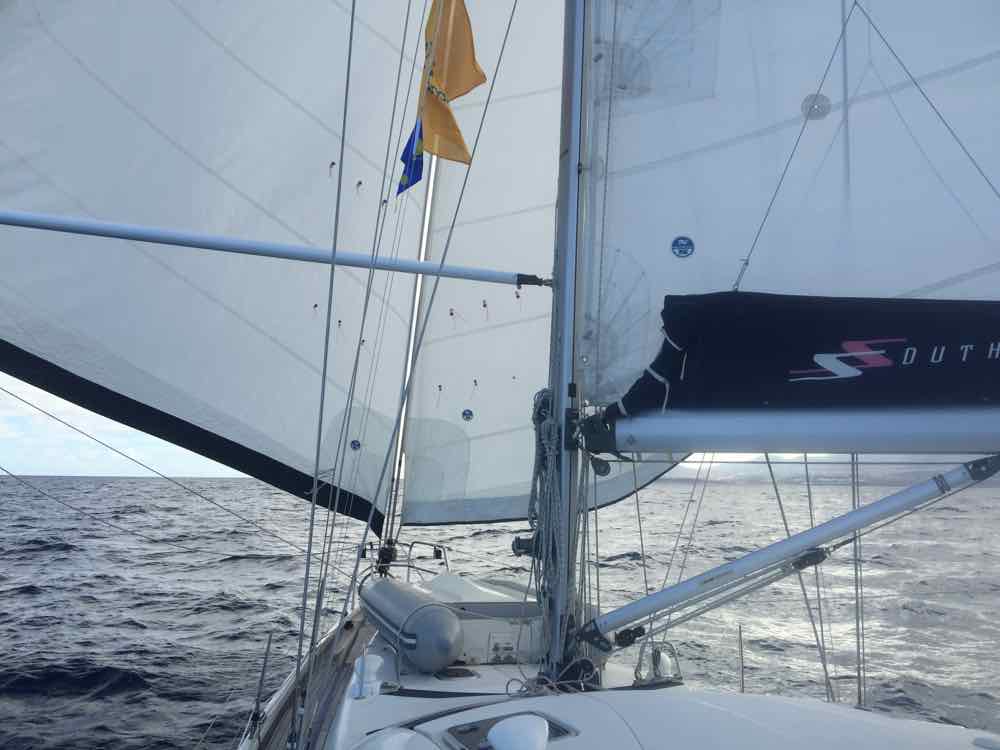
I think we'll get to use this rig coming up!! Happy Skipper!!
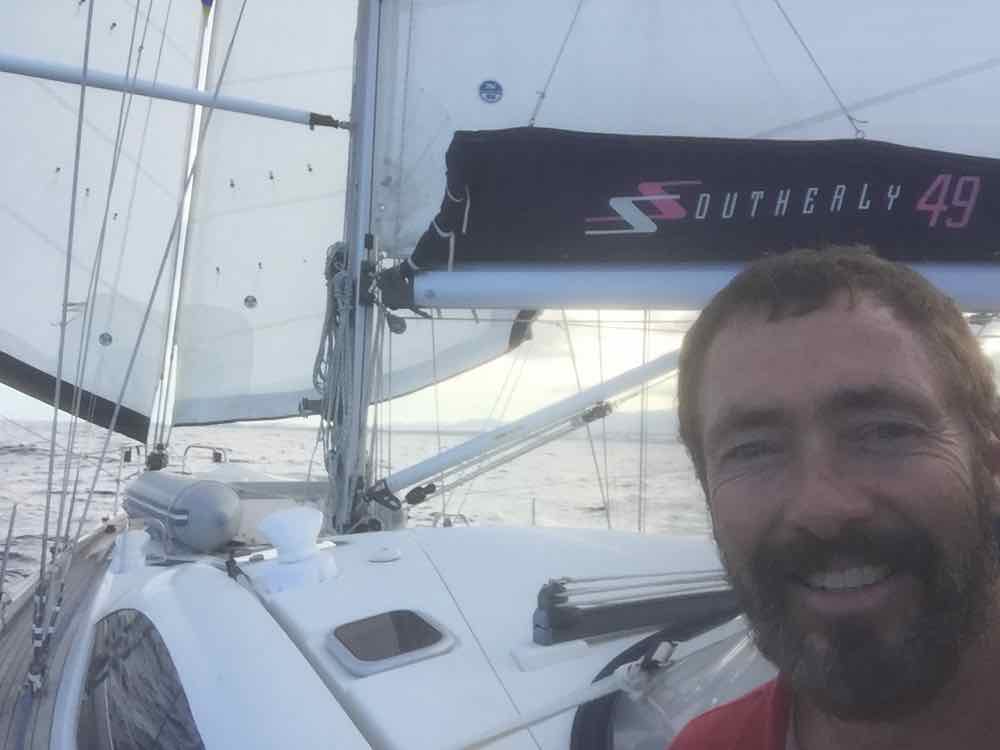
Last night was the ARC Gala party as ARC-Plus is setting off on Sunday, and ARC boats are arriving now setting off in 2 weeks. Las Palmas put on a great party, even with dancing girls and stage acts - seen here posing with their "costumes" yes thats just paint!

Happy crew nearly ready to go!
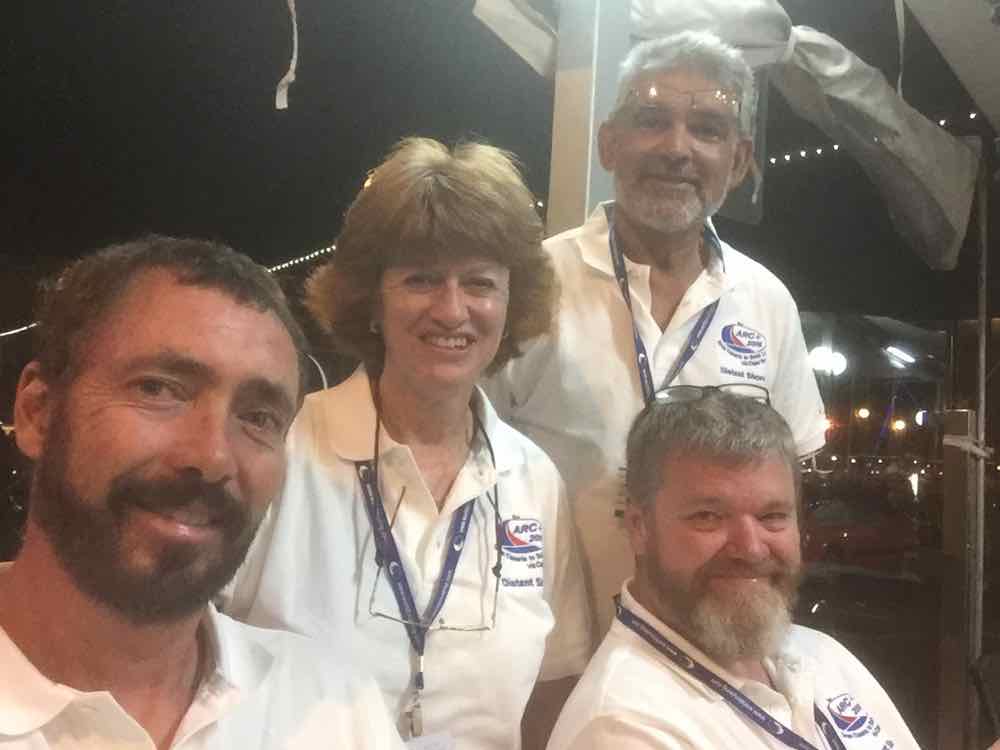
IridiumGO Review for Cruising Sailors
30/08/15 07:17 Filed in: Communications | Offshore sailing
Do you want to stay connected while at Sea? To send photos back home from your adventure? Email, social media, weather info and more? This is now possible (with conditions)!! Read on…

For most of our 26 years of cruising Sheryl and I have kept in touch and got our weather forecast updates through our SSB and Ham radio. Voice forecasts and radio nets provided basic communication and updates to the weather so we could make weather routing decisions.

Now that satellite communications is available we can do all that and more through a satellite internet connection. But its important to realize that satellite is naturally going to be slower and more costly than the modern 3G and 4G connections we have become dependent on ashore. The question is - does it meet your needs?
Our first try at Satellite communications at sea was back in 2012 when we bought an Inmarsat handset for use in the ARC. Used as a phone it was quite acceptable, but trying to make it also work for data was frustrating. We had hoped to receive GRIB files at sea but had very little success. One day we spent $25 on “data air time” and didn’t receive anything. Admittedly this was not what it was meant for but an overenthusiastic dealer promised more than was really workable.
After the passage we didn’t use the unit again…
Fast-forward to 2015 and we’re getting ready for our next ocean crossing. I’ve heard about the IridiumGO unit which sounds like the perfect device designed for data and voice, and with an “unlimited data” plan so you don’t have to worry about high per-minute data charges. Since we planned a big passage-making year with 2 Atlantic crossings, we decided to try it out.
What is IridiumGO?
The IridiumGO is a hotspot that lets you access the Iridium network for satellite communications. Your smartphone can make phone-calls, and apps on the smartphone can access email, texts, data, weather and more. There is an App to compress and send photos, and, probably most exciting for us is the Predictwind App that lets us get weather routing and GRIB files (more on this to follow in an upcoming review).
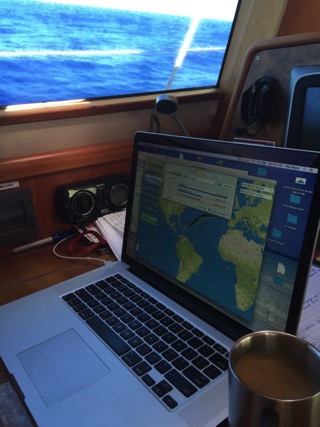
What it isn’t…
IridiumGO uses a data connection via Satellite that is quite slow - just over 2kbs. This is quite a bit slower than "dialup" as you may recall from a few years ago. You cannot “do your banking” or browser the internet. So although this is for us ocean sailors a revelation to connect to the internet at sea, it is at a speed that will not allow normal use of the internet we have become accustomed to ashore with 3G and 4G cellphones. Having said that, it is a REVELATION to be in touch offshore, as anyone on a passage can attest. We were able to send photos, texts, emails, position reports and access very high quality weather info (through the Offshore App from PredictWind - purpose-designed to work with the Iridium GO! )Photos
Sending a photo from Mid-Atlantic is something that was high on our “like-todo” list (our business is to film and document the cruising life). Iridium-GO has a photo sending app built in that neatly compresses photos down to a manageable size (20-40KB) and sends them as an email. We tested this MANY times and it was quite reliable - taking just a few minutes to send one.Texts
We do not send a lot of texts, but we did test this and it works fine.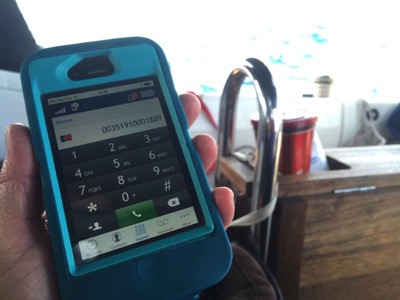
Telephone calls
Very handy and quite amazing. Suddenly my iPhone can call from anywhere. We made perhaps 20 phone calls so far and have not had any problems. Call quality was excellent! Although I had worried about delay, we found calls had an almost imperceptible delay. We received a few calls just fine as well. Magic that now our cellphones can now work anywhere! Below is the Iridium Phone app on Sheryl's iPhone as we call ahead to the marina in Flores Azores.GPS Tracking
IridiumGO can transmit regular position updates so friends and family can see where you are. We used this feature to display our position with a map right on our website. Predictwind offer this on a neat website interface all ready to go. Check out our last 3 month of cruising here on our homepage!What Does it Cost?
IridiumGO units are sold through resellers such as Predictwind, and our test unit from them included an external antenna, connectors and cables etc - on sale now for $1150. Then you need a connection/airtime package from Iridium. We had the unlimited data plan for $125/month.The Bottom Line
We recommend the IridiumGO to be in touch, send photos, email, twitter and get weather information. With the "unlimited data minutes" plan you can do all this without incurring a huge bill. It revolutionized the ocean passage for us and we look forward to our next passage - staying in touch!
Offshore - Diving on the Prop
22/08/15 02:27 Filed in: Offshore sailing
Offshore! We got a net caught on the prop as we were halfway to Porto Santo...
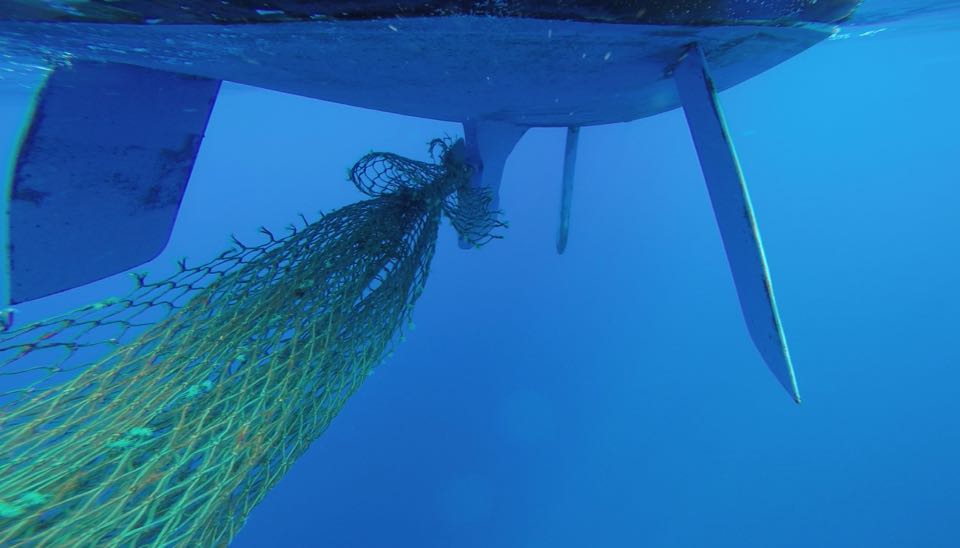
Rolling ocean swells mean you have to be careful not to get hit with the boat as you dive in clear blue water... I wore my weight belt and wetsuit so I would have protection against scrapes, and neutral buoyancy so as not to be coming up against the bottom. Some people have recommended a bicycle helmet for added protection but I haven’t tried this.
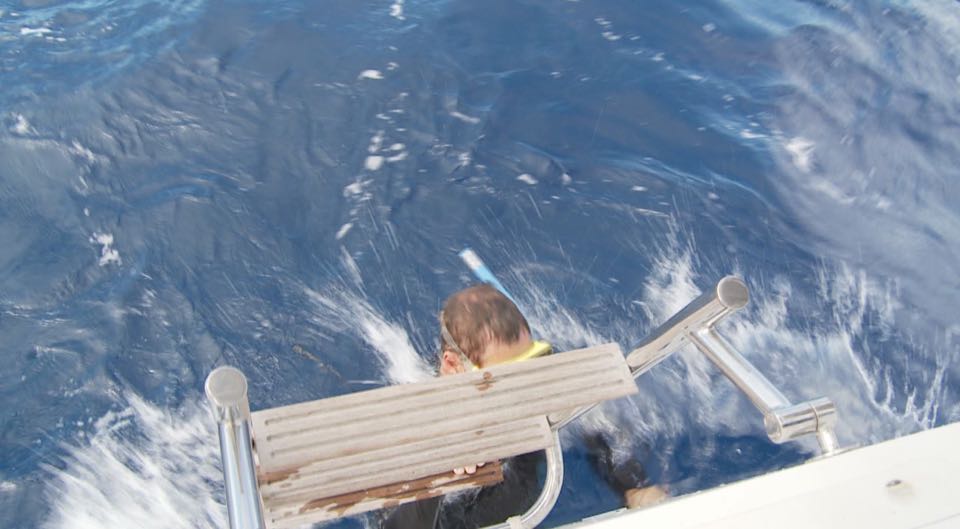
Offshore deep water - you can see Porto Santo on the horizon in the background!
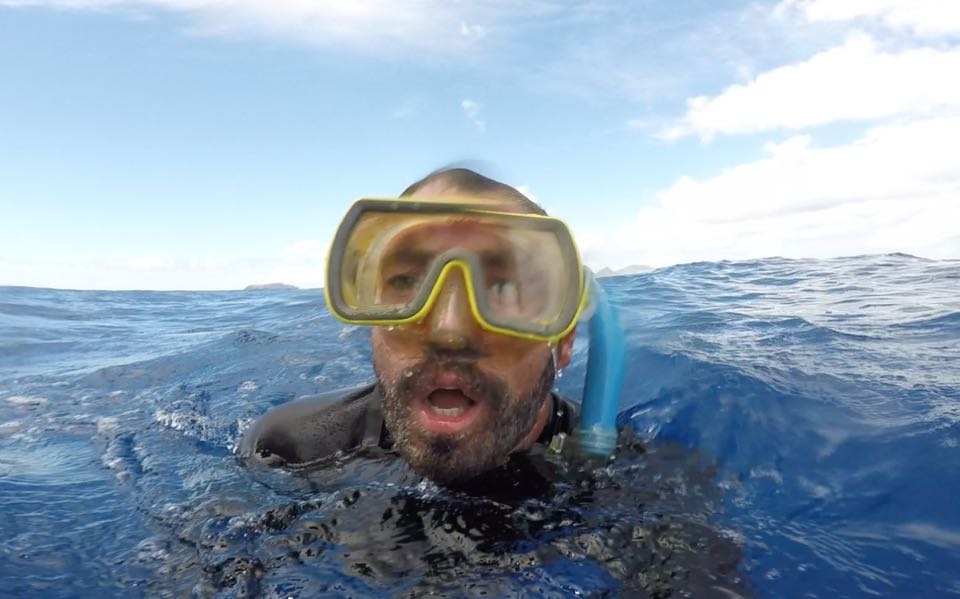
The net was visible trailing astern…
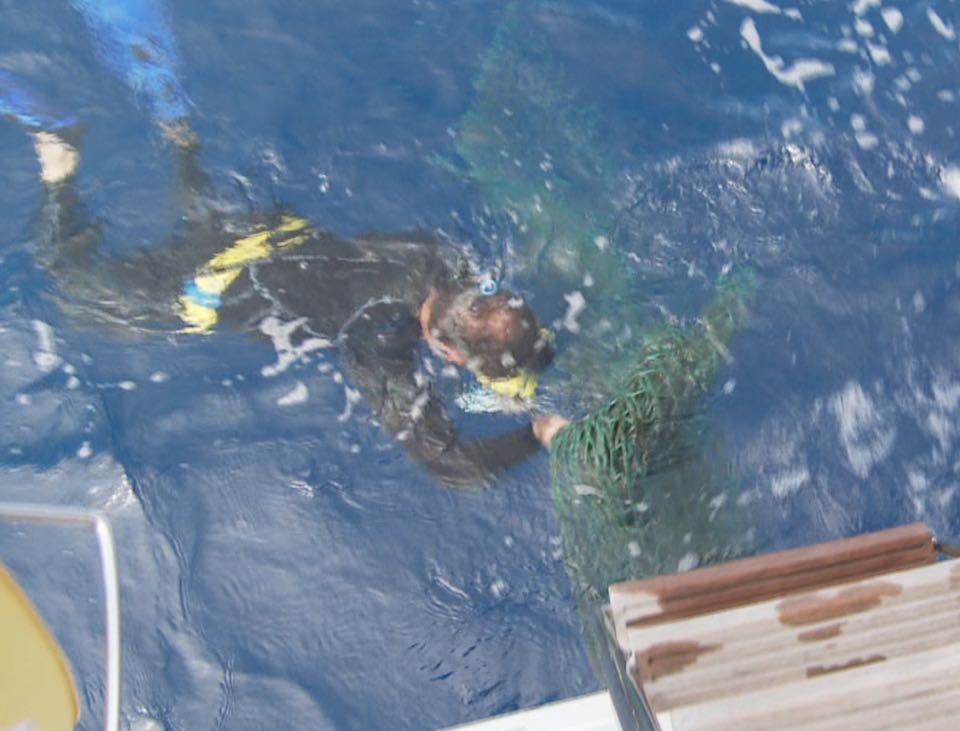
There might be a lot to cut through if something is wrapped tightly around the prop, so I usually dive with a divers knife on my leg, or a folding knife - but be careful with knives as the boat is bouncing…

Under the boat you need to be careful not to get hit by the boat/prop/rudders as the boat moves in the swell. My weight belt gives me neutral buoyancy so I don't float up into the boat. When I was down there it was easy to see how to untangle it without needing a knife to do it.
If you are not comfortable holding your breath underwater you might consider a hookah-style apparatus or small pony tank. But be sure to practice with it before heading offshore when you might need it.
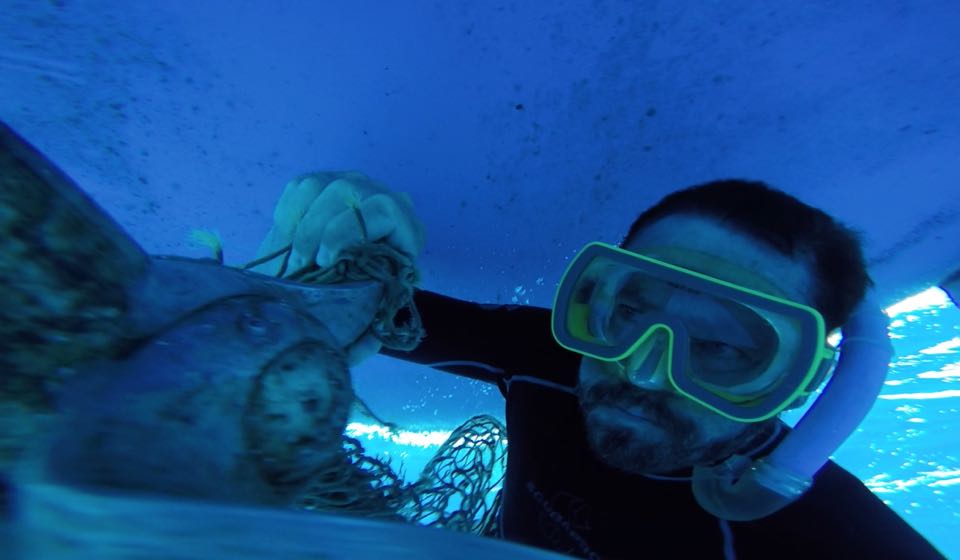
But as I got it off the prop I got slightly tangled in the net and then it got away from me... so its still out there floating…

Happy ending!
The net came off the propeller - and we even managed to film the whole operation!Sailing Polar Performance
07/07/15 06:34 Filed in: Offshore sailing
By Paul Shard, Copyright 2015. All rights reserved.
We have a lovely sunny day with light winds of about 6 knots on the beam. We are sailing at just over 5 knots. Is this fast enough? According to our polar performance data it’s not as quick as predicted. What is polar performance data? If you’re wondering if it relates to the “north pole” and what this has to do with sailing then read on :-)
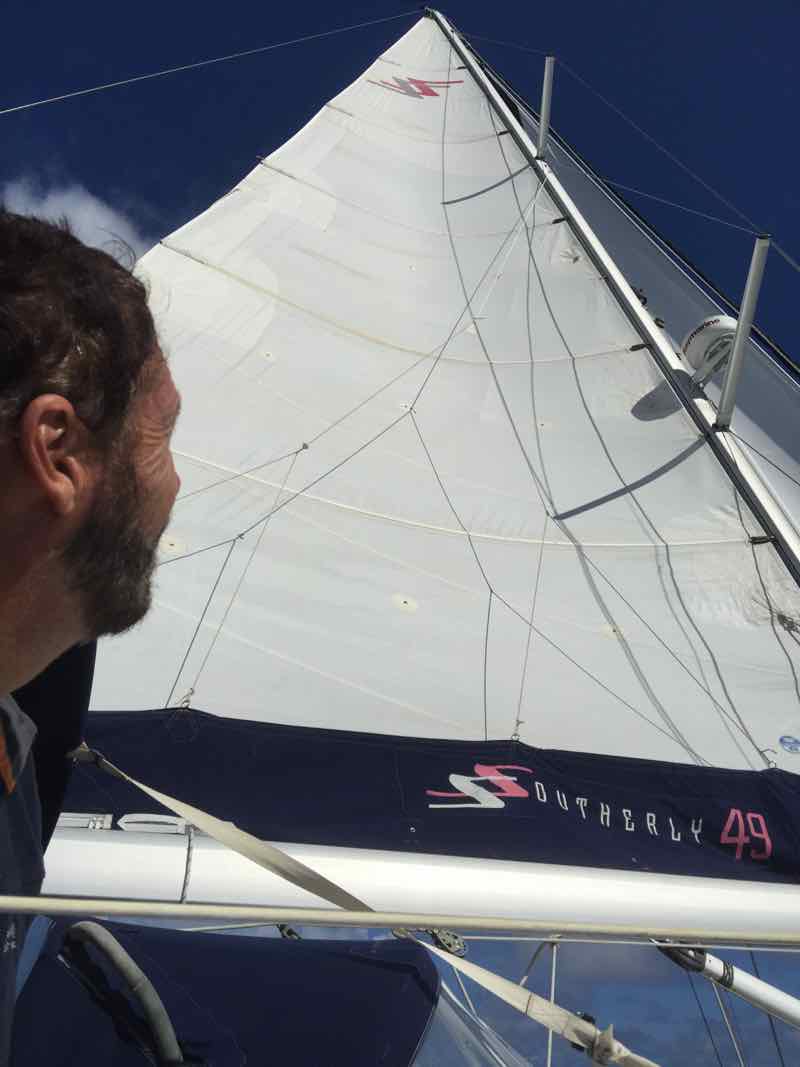
Polar Sailing Data
For any given point of sail your boat could potentially make a maximum speed with the sails set perfectly in specific conditions. It is useful to have this information and we can use it to compare boats, plan passages and more. To do so we need to organize lots of data for various conditions and points of sail for our specific boat.
This can be quantified by making a table of the true wind angle, true wind speed and achievable boat speed. It is commonly described for a specific wind angle like this…
90 degrees - Wind speed 6 knots - Boat speed 6.5 knots, Wind 8 - boat 6.8, wind 10 - boat 7.0, wind 12 - boat 7.1 etc
So a table might look like this showing winds from 4 knots up to 30 knots along the top row and wind angle in degrees down the left side…
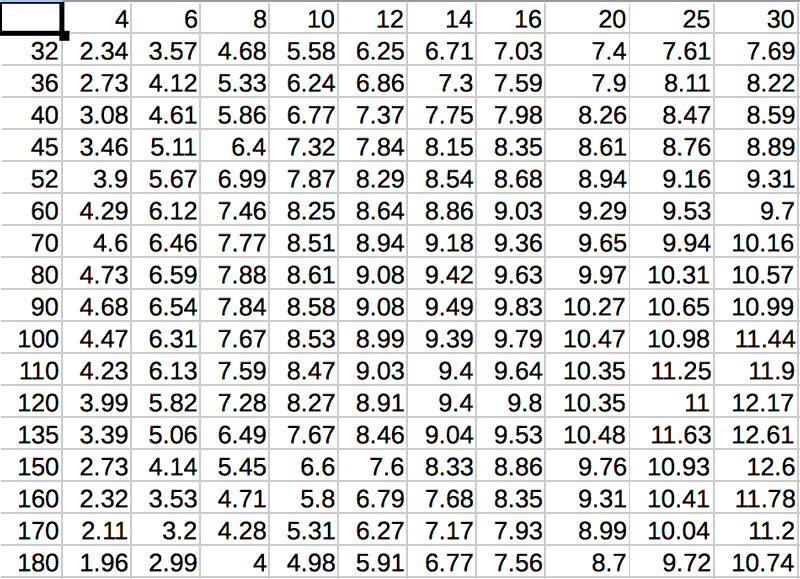
Polar performance can also be graphed in a polar diagram like the one below out of the brochure for our Southerly 49.

Theoretically with True wind 6 knots at 90 degrees we will make 6.4 however we make just 5.3. I think that's quite good for such light wind but it's a knot slower than we might in theory. Routing software can only suggest a good route if it can estimate where you might get to with your boat's actual achievable performance.
How to make polar performance data work for me!
Polar diagrams are calculated in a theoretical world with a clean bottom with no drag (no prop too) flat seas and perfect sails set perfectly. Our polar diagram includes us using a asymmetric spinnaker on a pole - an option we did not purchase so we will never achieve numbers so good when in those conditions. Also we will set sails and reef to suit our conditions and short-handed crew.
Routing programs usually allow us to set a "factor" to downgrade this to take into account the difference between the the perfect world and our real conditions. So setting this to 80% may get us closer to the mark. Our 6.7 knots we should be making will be reduced to match our actual performance of 5.3.
Then the program gives us a reasonable estimate that we might expect 8 more days on passage before we arrive at Flores. We are not racing after all and I had always wondered what this famously light wind passage would be like.
Out here in our high pressure world of endless sapphire seas, flying fish and tropical breezes we will sail gently on and enjoy this world that we as sailors are so lucky to experience!
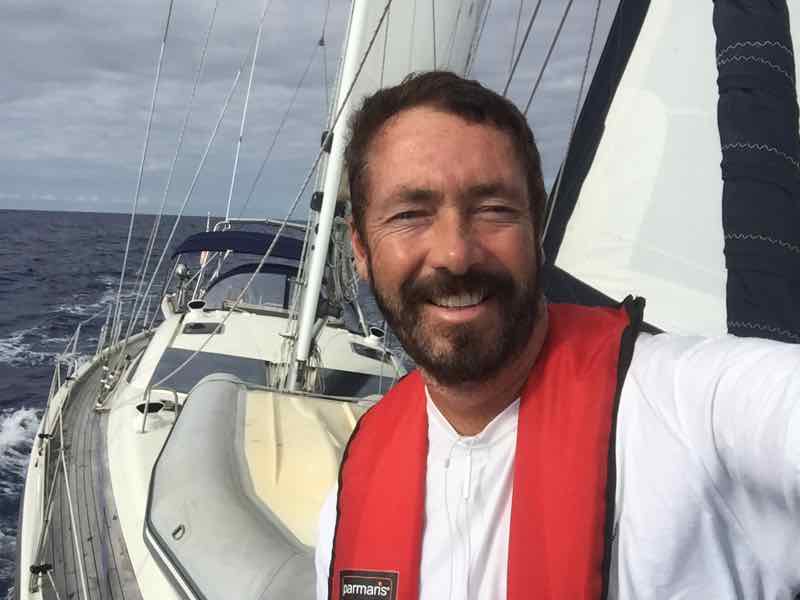
Polar Performance Sailing Suggestions
- Try pre-made tables if available. You can modify them to suit your achieved performance using them as a starting point.
- If no performance data is available you might find a table for another model that is similar to your boat.
- Record your sailing performance as you are out in a variety of conditions - perhaps you can improve the tables by downgrading your pre-made table to reflect your cruising reality (older sails, conservative decisions, to much gear stowed on deck etc)
- Examine “close hauled”. This was one situation where tables seem inaccurate for us. We cannot point as well as theory and tables suggest. We have 4-6 knots on the nose so want to be close on the wind. I tweak all I can but just get 27 degrees apparent. Pretty good I think but nowhere close to what our table predicts. We should make 19 degrees AWA (apparent wind angle) which is 32 true. If we use this with the routing software it will have making unrealistic headway.
- Garbage in, garbage out. The best routing solution from a weather router to software like Predictwind or others will only be able to suggest a good route if they know how fast you will sail in different conditions and headings. With proper polar data these routing services are a great idea (routing Blog to follow!)
- Polar performance data from the boat manufacturer is quite likely to be somewhat optimistic. They are trying to sell boats and show just how well a model could perform IF everything was perfect. This is not how we will sail shorthanded on the ocean with the boat loaded for a 3 week crossing…
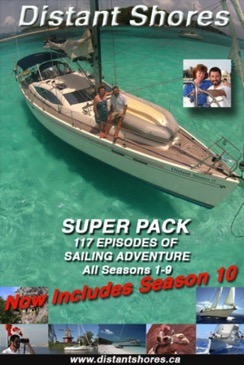
Order the Super Pack on DVD and get Season 1-10 Downloadable.
Order the Super Pack on Vimeo and we will send you the code for Season 10 as a bonus.
Last Minute before an Ocean Passage
10/05/15 05:47 Filed in: Offshore sailing
By Paul Shard, Copyright 2015. All rights reserved.
It's amazing how many little things are on the list when you are getting ready to do a big ocean crossing. The passage across the Atlantic - Caribbean to Azores - is over 2200 miles. It’s going to take us more than 13 days, perhaps 15 or 16, more than 2 weeks out of sight of land. We don’t want any important items left on the to-do list when we cast off in a few days. I still have a few small rigging jobs to do (lazy jack line replacement, taping up spreader ends etc) I need to look over the engine again, I have to clean the propeller and finish cleaning the bottom and a number more items…

The modern sailboat is a complicated machine with thousands of parts and they should all be working well before setting off to sea. But making a big crossing where there are no possible stops it is even more important. Is everything in good shape now? Do we have the proper spares if anything goes wrong? This week there have been the sobering reports of a number of boats lost at sea en route to the Azores in heavy weather. It brings into sharp focus the reality of setting out on an ocean passage. It is a serious business crossing an ocean. We want to be prepared as well as we can and make a safe crossing.
One of my jobs here in the last few days is to get familiar with the new Iridium GO unit and PredictWind software we are testing on this passage. The unit arrived yesterday and I will get it configured and practice with it over the next few days. I am especially interested in trying the PredictWind feature to help plan your departure date. Using a polar diagram (chosen from a list of common boats) to approximate our performance, the software calculates routes and times for the passage over 4 different departure dates. See the slide below… This shows recommended routes for the next four days. Note we are at the very outer realms of forecasting ability asking the software to calculate 2 weeks in advance and in fact the later departure routes do not quite complete since the forecast doesn’t cover the 18 days needed to calculate however en route we will be getting daily weather updates via the PredictWind app and the GO unit. This is just for planning and when we are at sea we will be using the routing tools to fine-tune our course. Initial impressions are that this will be a valuable tool.
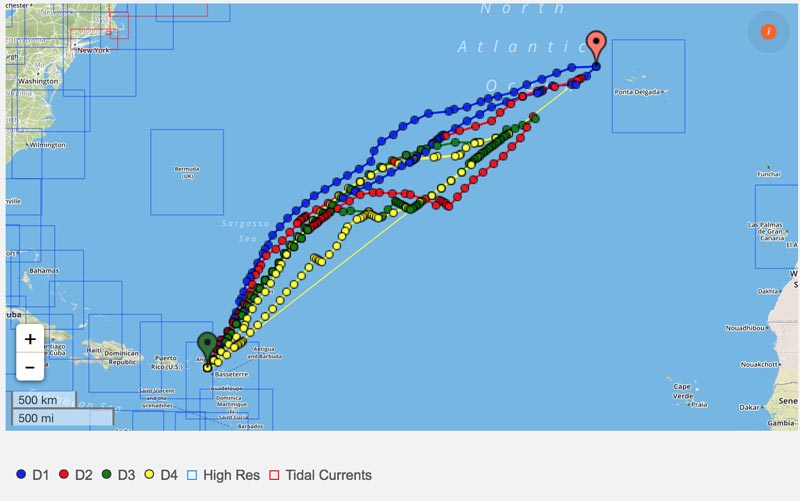
There is also a table generated showing how much of your time is spent in different conditions, for example “% time reaching” ranges between 62% and 93% depending on which weather model and departure date is chosen.
| D1 | D2 | D3 | D4 | PWG | PWC | PWG | PWC | PWG | PWC | PWG | PWC | ||||||
| Start Time | 10 May 12:00 | 10 May 12:00 | 11 May 12:00 | 11 May 12:00 | 12 May 12:00 | 12 May 12:00 | 13 May 12:00 | 13 May 12:00 | |||||||||
| Passage Time (days) | 13.7 | 13.2 | 12.9 | 12.9 | 12.0 | 11.8 | 10.9 | 10.9 | |||||||||
| Max wind speed (knots) | 18.6 | 19.5 | 22.5 | 18.6 | 23.6 | 16.2 | 20.8 | 15.9 | |||||||||
| Min wind speed (knots) | 2.4 | 3.2 | 1.7 | 1.7 | 3.8 | 2.0 | 3.4 | 1.5 | |||||||||
| Ave wind speed (knots) | 11.0 | 12.4 | 13.7 | 10.6 | 14.6 | 10.7 | 12.0 | 10.3 | |||||||||
| % time upwind | 22% | 2% | 25% | 5% | 35% | 8% | 43% | ||||||||||
| % time reaching | 74% | 71% | 72% | 83% | 62% | 88% | 54% | 93% | |||||||||
| % time downwind | 4% | 27% | 3% | 12% | 3% | 4% | 4% | 7% | |||||||||
| % time < 8 knots | 29% | 16% | 7% | 27% | 5% | 20% | 17% | 15% | |||||||||
| % time 8 - 20 knots | 71% | 84% | 85% | 73% | 79% | 80% | 81% | 85% | |||||||||
| % time 20 - 30 knots | 7% | 16% | 3% | ||||||||||||||
| % time 30 - 40 knots | |||||||||||||||||
| % time > 40 knots | |||||||||||||||||
| % time < 1m swell | 25% | 47% | 28% | 45% | 22% | 49% | 23% | 51% | |||||||||
| % time 1 - 2m swell | 75% | 53% | 72% | 55% | 78% | 51% | 77% | 49% | |||||||||
| % time 2 - 3m swell | |||||||||||||||||
| % time 3 - 4m swell | |||||||||||||||||
We are also hoping to get the Iridium GO unit to produce a tracking map of our route in real time! I will get this installed on our homepage so you can follow along if you like. Hopefully we will have all our jobs done by Wednesday and will be setting off shortly after that.
Bon Voyage!
Of course the best way to follow along on our voyages is by watching the Distant Shores Television series! Not in real time but we document our journeys and share destination hints and tips. The whole series is now available for download on Vimeo. See you out there!

Order the Super Pack on DVD and get Season 1-10 Downloadable.
Order the Super Pack on Vimeo and we will send you the code for Season 10 as a bonus.
Transatlantic Passage Planning
03/05/15 06:35 Filed in: Offshore sailing
By Paul Shard, Copyright 2015. All rights reserved.
Weather Research
May and June is generally acknowledged as the best time to cross West-East and has the advantage of arriving in the Azores in spring/early summer when the islands are arguably at their best. Starting from the Caribbean as we are means we don’t have to cross the Gulf Stream or worry about that - we will be looking for a forecast with E or SE winds so we have a nice few days at the start and head N-NE so we will be on the north side of the Azores High. Hopefully this will mean following winds as we turn eastwards around 30N. Check out Jimmy Cornell’s excellent book World Cruising Routes for recommendations of the passage you are considering.

Weather Planning
With just a few days to go we will fine-tune our departure forecast using passageweather.com and our weather routing software to plan a specific route. Check out my blog on the weather routing app Weather4D
Rigging Check
We had local St Martin riggers FKG look over the mast tuning a couple of weeks ago but I will be up the mast carefully checking spreader ends, masthead, chafe etc. With a hopefully large downwind component to this passage I will be adding some rigging tape on the back of the spreaders to reduce chafe if we have the main all the way out. I will set out the downwind pole and check all components of that setup to make sure its all in order. Lubricate all cars and check blocks are turning freely etc. Make sure all turnbuckles are taped and in good order. Lubricate the gooseneck and furling gear.
Provisioning
Sheryl will be laying on some great food for this passage I think :-) Her plan is to pre-prepare portions of repeatable meals to be frozen. With a day to go we will be buying fresh produce and final stocking up. Check Sheryl’s provisioning blog here…
Mechanical Check-up
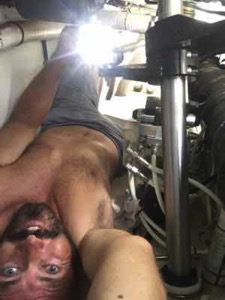
Lights, Radar, AIS & Navigation Equipment
I did a plotter software upgrade a few days ago and have been looking it over to make sure we are familiar with new features. I will also check all lights, test the radar, confirm our AIS is transmitting and generally make certain our nav systems are up and running.
Filters
I will check and empty our seawater strainers, and clean the knot-log impeller.
Bottom Check
I will also swim the bottom 1-2 days before we set sail. Barnacles grow prolifically here in the Caribbean and everything seems to especially enjoy life in the St Martin Lagoon :-) so I will make sure we have no unwanted growth slowing us down before we set sail. Even a small amount of growth could slow us 0.5 of a knot. But 0.5 knot equals roughly 1 day slower passage…
Happy Hour
Tempting as it is to celebrate departure with a big party the night before we find that can make crew more susceptible to seasickness. We will have a nice dinner the out a day or so earlier, then the evening before departure we’ll have a more restrained meal and an early night to make sure the crew is in top shape for the adventure ahead!
Departure
We like to leave around noon if possible for a longer passage. We have a few hours at sea in full daylight to get clear of land and get into a bit of a routine before the first night watches. It will take a few days to get into the rhythm of life at sea and this is a good way to start off!
Travel the world with us aboard Distant Shores

Order the Super Pack on DVD and get Season 1-10 Downloadable.
Order the Super Pack on Vimeo and we will send you the code for Season 10 as a bonus.
J&K Via Facebook“It’s because of your first season that we took off to go sailing and meet new people. 45k miles later, we're more indebted to you than ever. Thank you!”
Solar Power on Sailboats - Arch Building
23/04/15 06:57 Filed in: Electrical
By Paul Shard, Copyright 2015. All rights reserved.
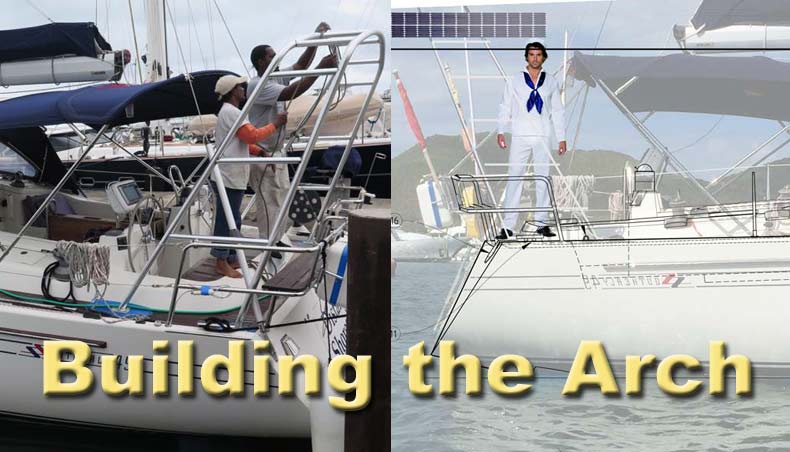
Here are a few shots from the process of building the new aluminum arch to hold Distant Shores II solar panels. I have done the design (see blog here) and took it to FKG in St Martin. I think these guys are the best in the Caribbean for rigging and fabrication of stainless/aluminum projects for boats.
In the Shop
Nice work on the corner support! This will stiffen the structure reinforcing the corners. Beautiful welding!

Final Tweaks
We have a Rogue Wave wifi antenna and need a place to put it on the frame. Here David adds a tab to be the base mount.
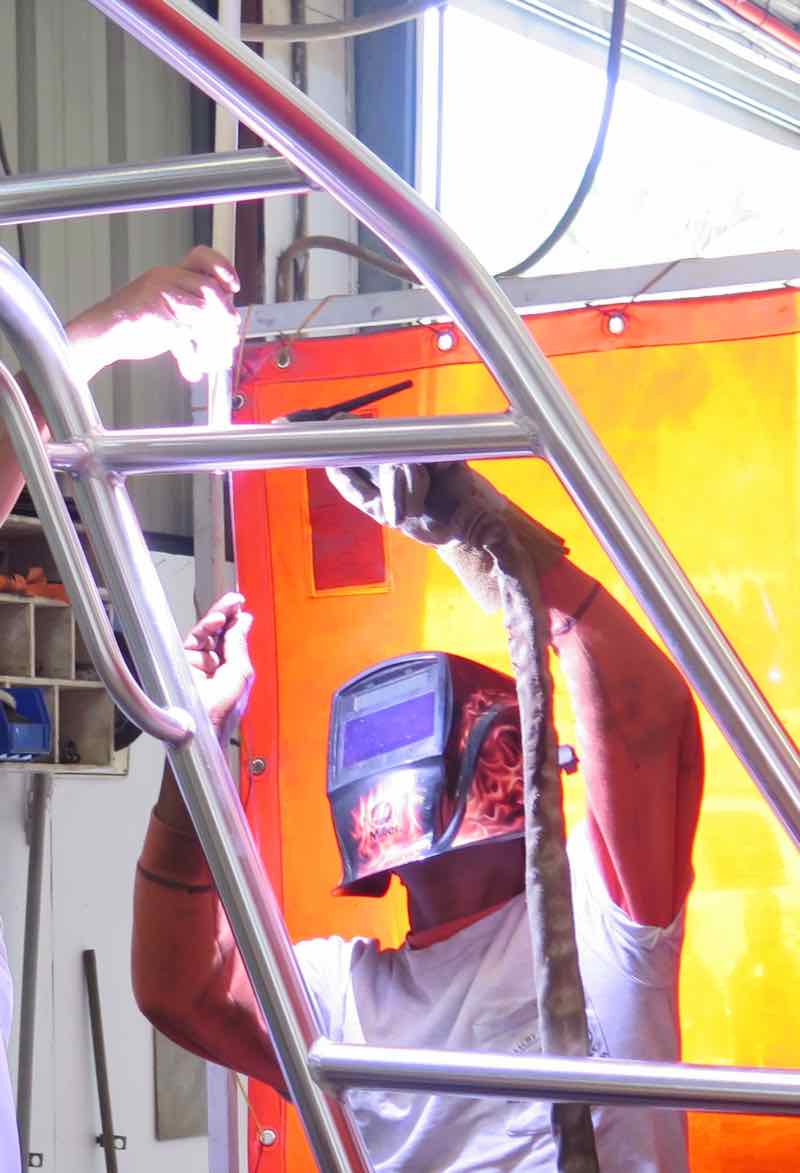
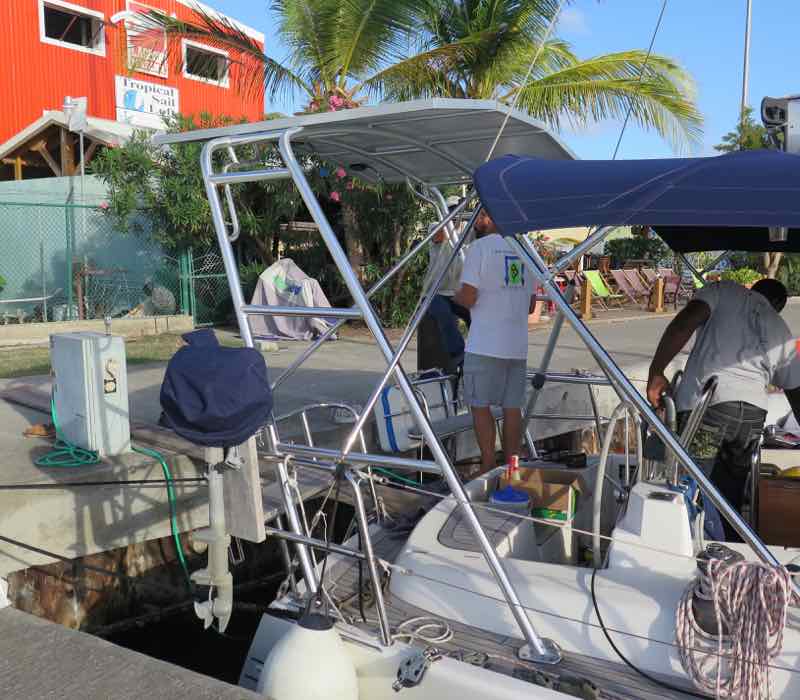
Sun sets over the arch - tomorrow I will hopefully be finishing up the wiring and get it running!
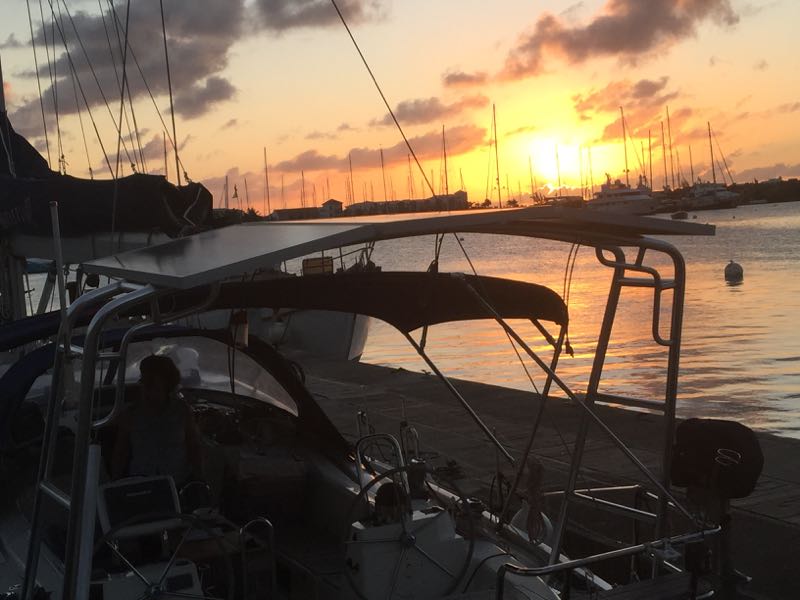
Are you dreaming of sunny sailing where you would benefit from a solar panel installation? Check out our videos on all sorts of great sunny destinations!

Solar Power Planning
10/04/15 16:35 Filed in: Electrical
By Paul Shard, Copyright 2015. All rights reserved.
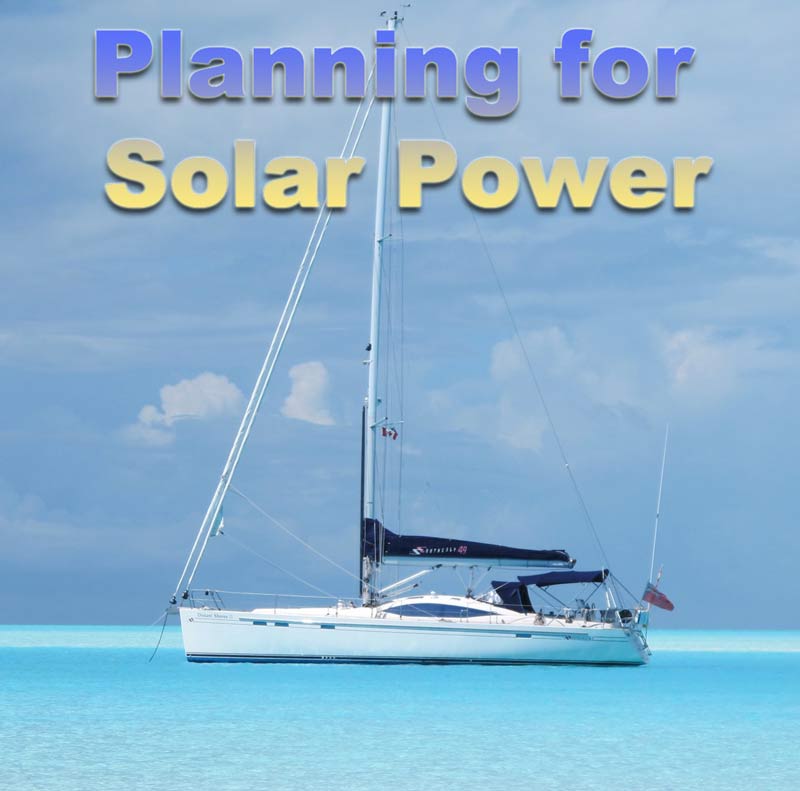
Ever since we sailed down from Northern Europe to the sunny south of France and across to the Caribbean I have been hoping to be able to soak up some of this beautiful sun with solar panels. In our northern cruising with Distant Shores II I do not think they would have added that much, but here in the south is the place!! But I do not want to just start dangling solar panels on the boat without thinking it all through. We are proud of the sleek look of Distant Shores II and want to keep that as much as we can.
First I tried to plan an installation with flexible panels that were attached down on deck. Appealing since the lines of the boat would not change. I have seen another Southerly that has this and it was very tidy. There were 2 problems. With the available deck space, the amount of solar power added would not be nearly enough to satisfy our needs! It would be great to have a little to top up power when hauled out in the boatyard but it wouldn’t make much difference to our power budget afloat. Secondly the position on deck would mean the panels were often shaded by mast, rigging etc, so power produced would be even less. Unless you have a catamaran with large open deck spaces, solar panels mounted on deck will produce much less than you might hope for.
So I went to work planning an arch that I thought would complement the sleek looks of the Southerly 49. I am planning it in aluminum for lightest weight. Here is my first draft at a solar arch on the stern. Drawn to scale the sailor is 6’2 to walk under it.
What power do we need?
If you are going to plan solar power for your boat, knowing what you use is a definite starting point!
No denying that aboard Distant Shores II we are a power hungry boat! We have all super efficient LED lighting, excellent Frigoboat fridge freezers, efficient Caframo fans and more modern efficient equipment. Our 2 MacBook Pro computers are often on as we are aboard rough-editing the next episodes of Distant Shores Sailing Adventure TV show. It all adds up. Now that we are in the tropics both our fridge/freezer and our top loading freezer are using more power here in the warm climes. Our budget for power has crept up to nearly 300ah/day at anchor - about the same as we use at sea! 300ah X 12V = 3600 watts.
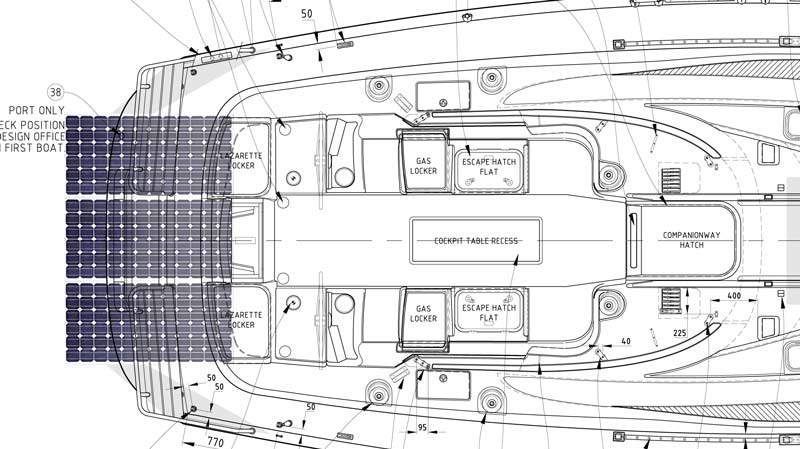
This plan will allow me to install 3 panels each producing 155 watts for a total of 465 watts. West Marine estimates a solar panel might produce 5 times its rated in a day in the USA (hopefully we’ll get more in the topics?). To get our daily production estimate we can multiply 465 by 5 hours of full sun as a simplified formula = 2325. So we might be getting 65% of our daily use.
Do you know how much electrical power you use on your boat?
Check out this blog on calculating your power usage with an overview of the process…
Planning a trip to the tropics? Solar Power might be in your future… here is an episode of Distant Shores below… you can download the whole 24 minute episode to view on all your devices…

Warning Shallow Water!! A Field Guide to Identifying Southerly Yachts…
29/03/15 07:43 Filed in: Southerly Boats | Shallow draft
By Paul Shard, Copyright 2015. All rights reserved.
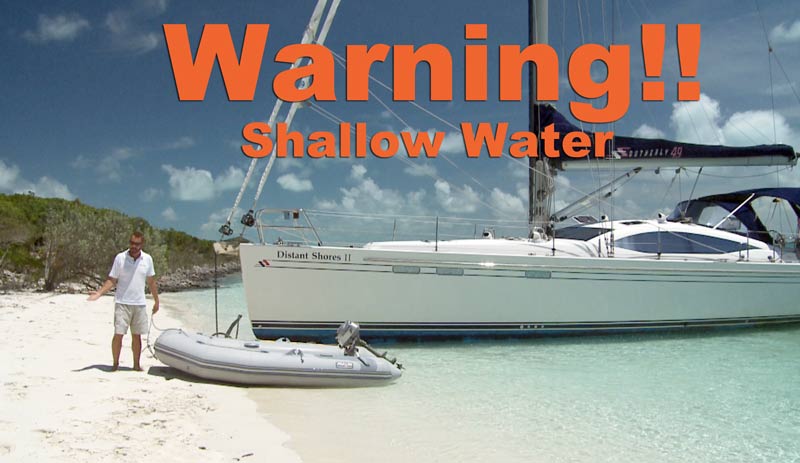
This morning we dropped anchor in Simpson Bay Lagoon on the lovely island of St Martin. Pretty views, excellent protection and central location close to everything! But before we were even able to get the anchor set and the snubber on we had already caused a Bavaria 42 to run aground! They were looking for a spot to anchor and saw us, on a 49 foot boat, in a large open spot with plenty of room to drop the hook near us. Unfortunately for them they did not recognize our boat is a shallow-draft Southerly and we were in a very shallow spot - that’s why it was empty. We have the keel up and are drawing just 2’10”. The water is just over 3 feet deep.
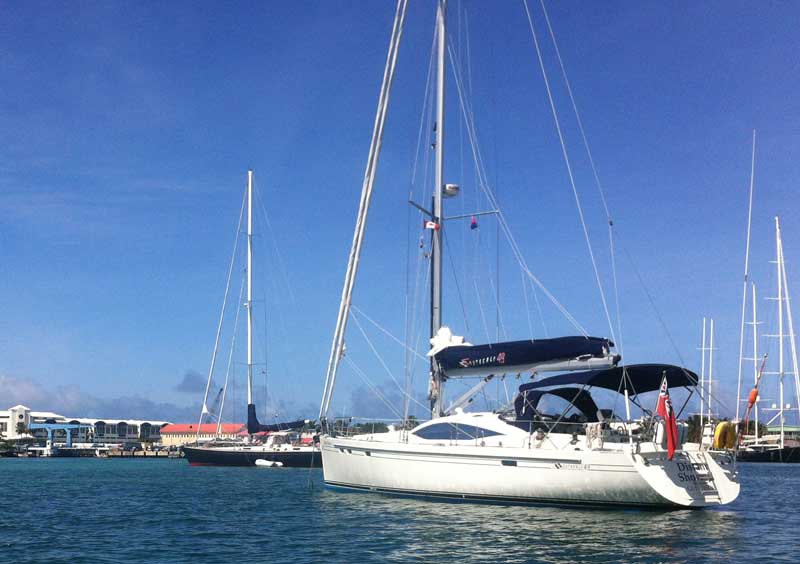
This patch of shallow water is marked on the chart but still every day we have boats either trying to anchor near us or trying to cut across the corner - and they run aground. Luckily it’s just mud, and the Bavaria unrolled their jib to heel the boat and reduce their draft. Unfortunatelly they headed directly towards us thinking that would get them back to the deep water. I called over to them to head the other way and they got off the mud.
Yacht Draft Comparison
Here are some boats in the 40-50 foot range… We are the longest with by far the shallowest draft. Anyone who owns a Hanse will suspect nearby boats are shallower than they are but people who own Island Packets often assume they are shallower than us! WRONG!
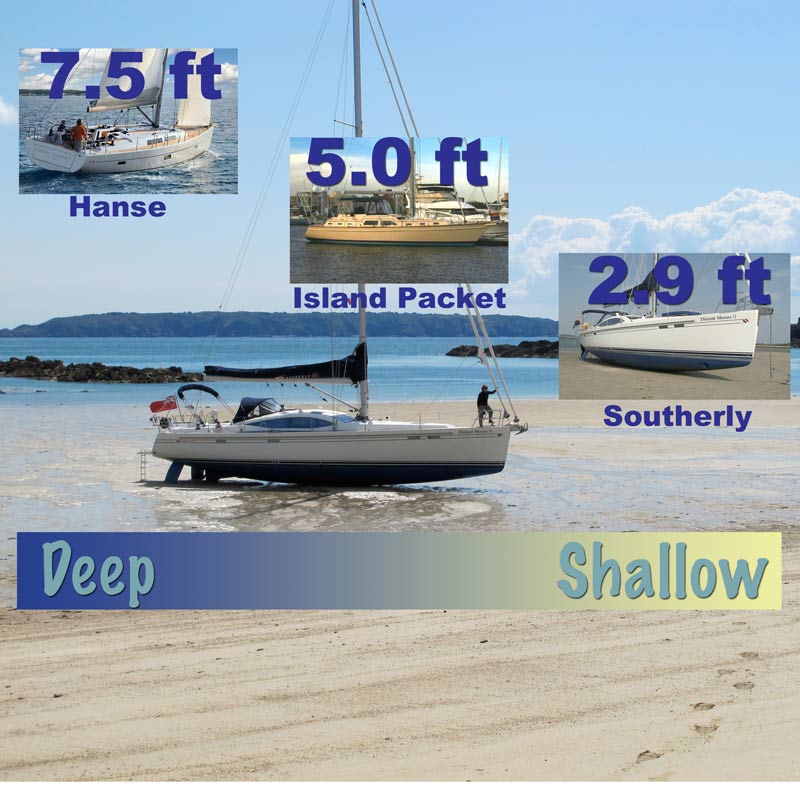
Over 800 Southerly Yachts have been built in the south of England and over there most people recognize them and know a Southerly might be in shallow water. But even in Chichester Harbour, just 1 mile from the factory, this monohull “took the ground” accidentally coming in too close to us on a falling tide.
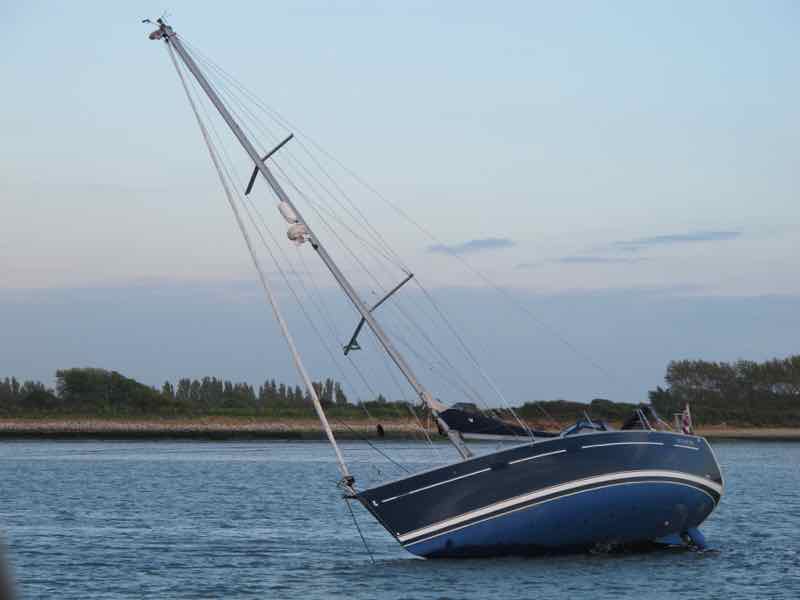
Beachable
All Southerly yachts have been built with the ability to “take the ground”… here is a video we did as we purposefully sat on the bottom in the Bahamas and got back off the beach the next morning…
Identifying Southerlies
So here are a few images of different Southerlies built over the years to help you identify them. If you see one it might be in shallow water. This is a popular model called the Southerly 35RS - 35 feet long.
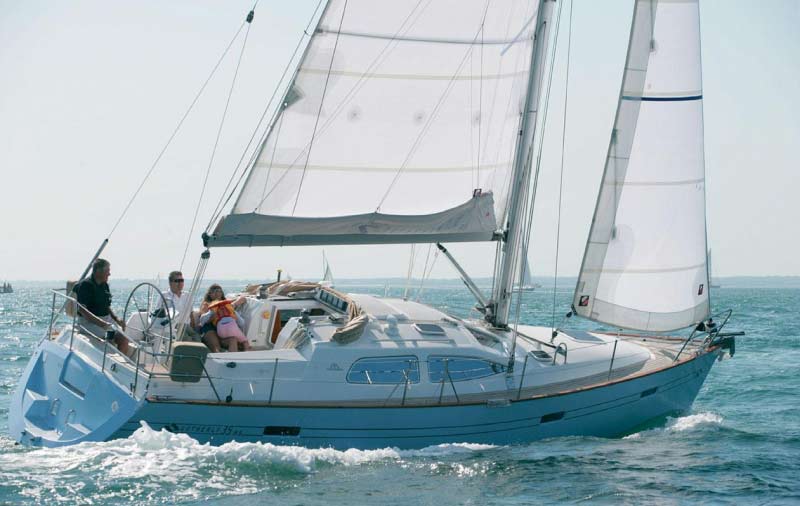
Below is a Southerly 100 - similar style to many of the older models.
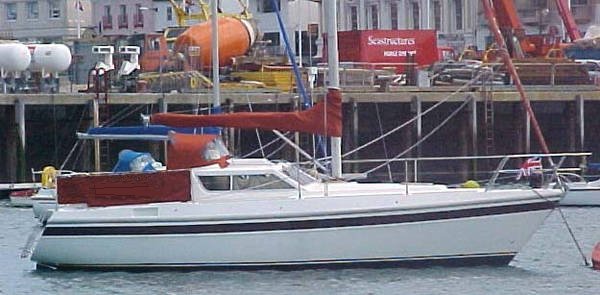
Largest Southerly ever built! She is 57 feet long. Would you believe this boat, Rosetta, draws just over 3 feet?
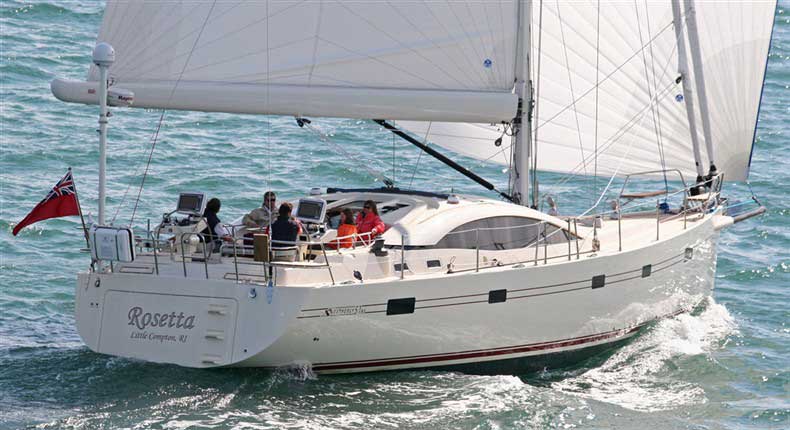
Here is the Southerly logo - often on the hull or sails…
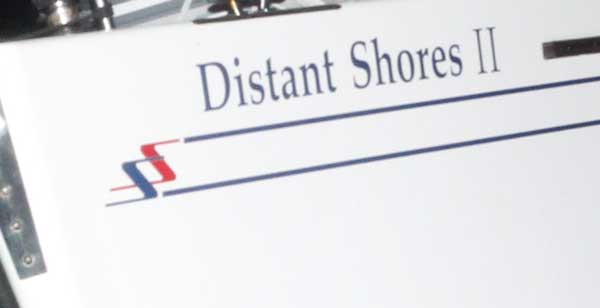
Secret Sauce
Here is the reason we can sail well (keel down) and still sneak into VERY shallow waters… this huge keel lifts up!
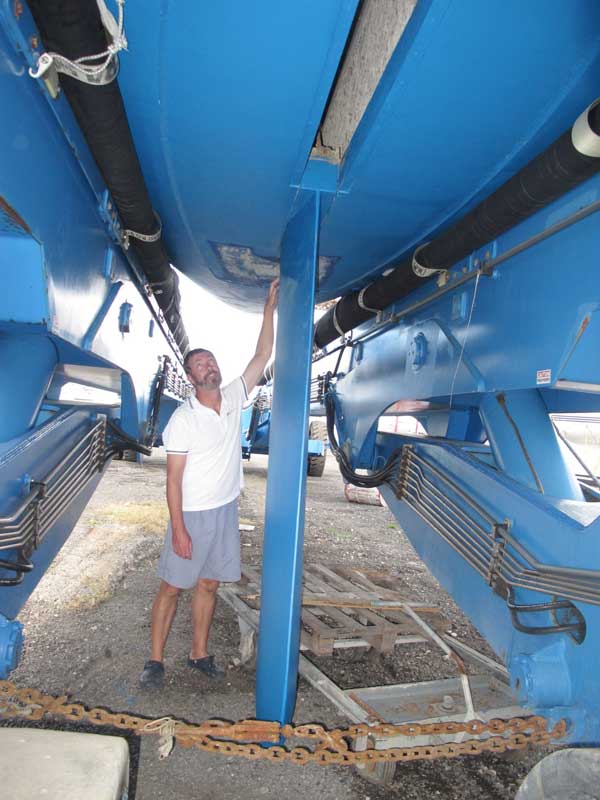
Here is the hull drawing… note the keel swings up to hide entirely in the hull…

So if you see Distant Shores II in an anchorage, please come and say hi! But don’t come and anchor near us until you have checked that there is enough water for your boat and that we aren’t in one of our special “shallow draft only” anchorages!
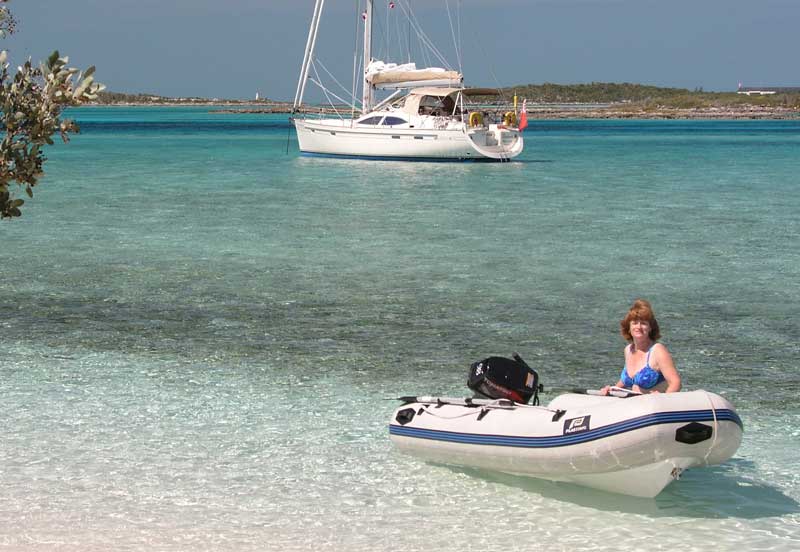
Adventures in Shallow Sailing
Check out some of our favourite shallow water sailing grounds in the Bahamas with this free “starter” episode of Distant Shores… you can download the whole 24 minute episode to view on all your devices…

When to Abandon Ship?
06/03/15 12:54 Filed in: Offshore sailing
By Paul Shard, Copyright 2015. All rights reserved.

When would you abandon your boat? What set of circumstances would have to occur for you to call for help and be rescued leaving your boat adrift in the ocean?
Recently there have been a few high profile incidents where cruising boats got into trouble, distress calls were broadcast, the crews successfully rescued and the boats were abandoned although they were floating. It got me thinking about that most terrifying of situations, having to abandon the boat.
In the mid-eighties as we were preparing to set sail, we read advice about dealing with storms, keeping the boat afloat, collision systems and heard phrases like “step up into your life-raft” - in other words don’t get up into your life-raft until the boat is sinking beneath your feet.
When we started cruising in 1989 we made easy passages heading south on the coastal route to the Bahamas before tackling an ocean passage to Bermuda the next year. Then when that went OK we felt ready to try a bigger crossing - our first Transatlantic - and ran into our first big gale. A front was stalled near Bermuda and we thought we could outrun it en route to the Azores. But it caught us and we had winds 40-50 knots with 25 foot seas for a couple of days. Our autopilot was not able to steer in the big seas, waves boarded and tore away much of our cockpit canvas, we had leaks in the forward hatches, the bilge pump was cycling regularly, both of us were quite seasick and we were dealing with by far the largest waves we had ever seen.
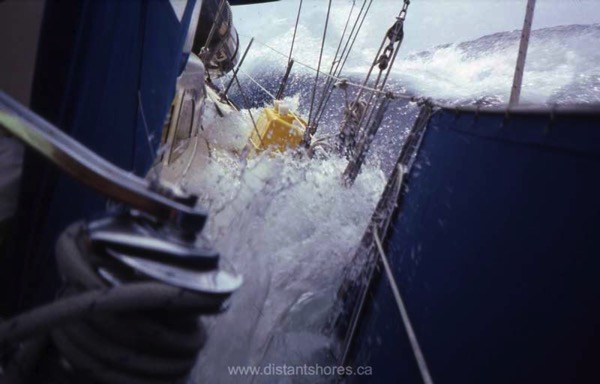
Did we think of abandoning ship? Well no, but if you had happened by with a helicopter you might have got a deal on a 37 foot boat right then :-) But as the weather continued we dealt with the problems, hove-to for about 24 hours and finally got back underway. This was in May 1990 and we had faced one of our big fears - a storm at sea. We’ve faced many large storms since then but this is the one that tested us the most.
Here is an stormy video excerpt showing big seas - not the biggest - but pretty big...
In the last few weeks there have been two incidents of sailboats abandoned not far from where we experienced our first big gale. The remarkable story of the 43 foot Sedona, purchased on Ebay for $10K. She set off in February (on Friday 13th) from Rhode Island planning a voyage to Australia? (Seriously) Winds of 40 knots tore her sails and with engine problems they activated their EPIRB. By the time a Coastguard helicopter arrived conditions had worsened and the rescuers braved 60 knot winds and 25 foot seas to lift the father and son crew off the boat. I am glad everyone is OK after the rescue. There were no injuries.
The skipper is quoted as saying, “Most people assume we set off the EPIRB because of the storm. That had nothing to do with it. We were stuck dead in the water unable to move it.”
So here is a situation where the engine isn’t working and the sails are torn. Undoubtedly there were other problems too. But was it time to abandon ship?
Beam me up Scotty!
In Star Trek it was quite a simple job to jump out of a troublesome situation and suddenly be beamed back aboard the Enterprise. But today’s reality is a bit more difficult. Coastguard rescue personnel risk their lives every time they are called out. Rescue swimmers jump into freezing waters and risk getting tangled in rigging to get people off stricken vessels. It is not as simple as a request to be beamed up. It is pretty dicey to be pulled off a vessel at sea. A rescue transfer to a freighter will likely involve being dragged in the water, possibly being banged against the hull of the ship as you are winched aboard. There are risks involved with being rescued too.
Aboard Distant Shores II
When Sheryl and I sail across oceans we have always assumed there could not be a helicopter rescue. We would have to climb into our life-raft, and frankly even the best raft is something like a kiddie pool with a roof (and no means of propulsion). Our plan has always been to do everything we could to keep the mother ship afloat. The advice is to “step up into your life-raft” meaning your boat has to be actually sinking so low that it was a sure thing you would need to abandon ship. We do everything we can to prepare for emergencies and to try to prevent them. We plan passages in the seasons when they are not likely to have terrible weather. I think there would be certain passages we would just not attempt - such as leaving in January from the coast of the northern USA. And if we did have to do that for some reason I think we would have, at the very least, a sturdy storm sail set up ready to go.
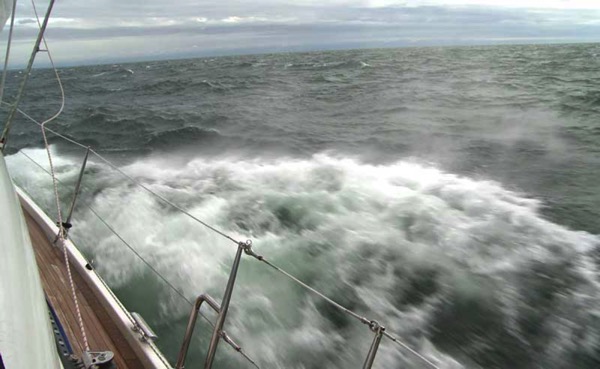
Hope for the Best but Prepare for the Worst
Making a passage plan, even with a good weather forecast will involve planning your best case scenario. But it is essential seamanship to have plans for what to do if everything doesn’t go as hoped. “If we leave tomorrow beam winds mean we will probably spend three days at sea.” What if you have a problem with your jib and end up sailing just 3-4 knots instead of 6 knots. Will you get into a storm because you are sailing slower than planned? Then you would need to be prepared for being in a storm. Will you be able to heave to or fore-reach to wait as the storm passes? If the engine were to fail for some reason, would you have a way to generate power, or would you be prepared to hand-steer without the autopilot? If not perhaps consider an additional crew member to help with duties. If you’re dismasted do you have extra food and supplies for a lengthy passage at sea under jury-rigged sails?
Think through some possible problems - fire, engine failure, rigging problems, seasickness, autopilot problems? For example, taking on water. Do you have a bilge alarm set up so that you are warned as soon as any water comes into the boat. Do you have a collision blanket or other plans to temporarily plug a hole. Check out my blog on installing a Bilge Alarm here.
And do you do a thorough safety check and get re-familiarized with all the safety equipment you carry on board before heading offshore? Do you know how to use your EPIRB? Do you and all members of your crew know the procedure for making a distress call on the radio? When participating in the World Cruising Club’s Atlantic Rally for Cruisers (ARC) in 2012 on our 5th transatlantic crossing (which we documented in three half-hour episodes in season 9 of the Distant Shores sailing TV series), a thorough safety check was carried out on each boat. Here’s an excerpt showing the steps involved…
When Should You Abandon Ship?
So, what would it take for you to abandon ship? I welcome your comments below.
Addendum: PAN PAN or MAYDAY
See Andy’s comments below - sailors rarely use the PAN PAN call. If a situation of urgency exists but not immediate danger to anyone’s life or the vessel itself, then PAN PAN is the correct call - not MAYDAY. For example, our mast has fallen down, we have cut the rig away and we are safely floating but not under way then we should call a PAN PAN. We are not about to climb into our raft since the boat is floating, but we should notify Coastguard of our urgency. Perhaps we will not be able to affect repairs and might need help. However there is no immediate danger to life or the vessel itself.

Short Scope Continued - Crash Test
14/02/15 17:48 Filed in: Anchoring | Rocna Anchor
By Paul Shard, Copyright 2015. All rights reserved.
Testing continues... In this case we are anchored in 12.5 meters of water (plus 1.5 meters to the bow) for a total of 14 meters bow-to-bottom. We have our Rocna 33kg anchor (73 pounds) plus 45 meters of rode... 45 / 14 = 3.2:1 scope...
We wonder just how much force the anchor will get if we load it right up with this short scope. With our previous tests we believe our engine will simulate 30 knots of wind - but what about stronger gusts or lulls that allow the boat to build up momentum and jerk back harder? We decide to simulate this by jerking back on the anchor from a position somewhat forward then putting the engine in hard reverse. Sheryl will be on board and running the engine. This is not a precise test since the speed we attain in reverse will vary with each test. But it will make much greater forces than just running slowly up to full throttle astern. Sheryl will also try to estimate how this approximates to forces we have felt on the boat in violent squalls at anchor.
We are anchored and the boat resting - chain hanging down - as Sheryl puts the engine in full astern. We develop some sternway and momentum before the chain comes up taut, bouncing our 36,000 lbs of boat back forward. The force on the boat is quite impressive - Sheryl describes it: “The bow immediately snapped around to line up with the anchor and then the bow got pulled down from the force on the chain due to the anchor holding so well. It felt like when gusts of 40-50 knots whip the bow around”.
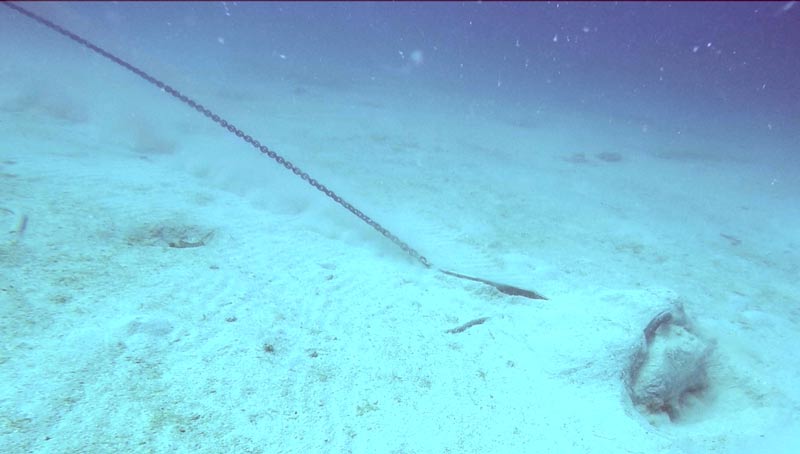
Underwater I watch the chain lift up off the bottom. It is coming up at an angle that actually raises the shank a little. The anchor moves about 12 inches back and digs in deeper. I wonder if this would have been the same with our old CQR Anchor? It might have possibly pulled out and dragged - but the 73 lb Rocna held on well.
Now Sheryl extends our scope to 52 meters - 52/14 = 3.7:1 so we are still less than 4:1 scope. We retest with a similar full power fast reverse and the bow snaps around again. The extra scope makes a big difference here as the shank doesn’t quite come up off the bottom. The anchor barely moves this time.

Conclusions on Deep Water Anchoring
In normal conditions (not storm force forecast) an all chain rode will allow reduced scope in deep anchorages. We find 3:1 scope to be OK for anchoring in 50 feet of water. Increasing scope to 4:1 or 5:1 will be better and would be a good idea if strong squalls were forecast. Even an increase to 3:5:1 will make the anchor more effective.

Join our email list and get hints, technical articles and tips plus videos to help you achieve your cruising dreams.
- FREE 1/2 hour video on cruising the Exuma Islands in the Bahamas
- Technical Blog shows you how to deal with issues facing the cruising sailor
- Destination information from some of the world's best cruising areas
- Special discounts and promotions
Anchoring Sample from Lets Go Cruising
Short Scope Anchoring in Deep Water
07/02/15 07:43 Filed in: Anchoring | Rocna Anchor
By Paul Shard, Copyright 2015. All rights reserved.
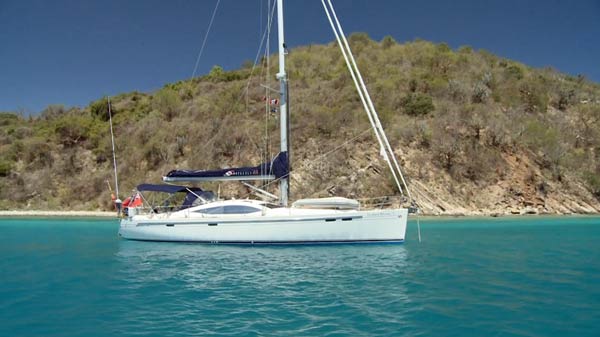
Do you ever wonder how to anchor in a crowded anchorage when the water is a bit deeper than you are used to?
Do you sometimes come into a busy anchorage and can’t to find a place to anchor where you can put out the recommended 5:1 scope?
Or do you sometimes arrive at an anchorage that is deeper than you’re used to and wonder if you have enough rode to lay out a 5:1 scope?

Welcome to the world of “short scope” deep water anchoring…
In deep anchorages that are either small or crowded Sheryl and I occasionally need to anchor with shorter scope than we would like to. In these situations we have used as little as 3:1 scope. The question is “how bad is this really?” Are there situations where you don’t really need to have the recommended 5:1 scope?
Standard “rules” say we need 5:1 scope and this is a good generalization for regular anchoring with an all-chain rode. But it doesn’t take into account the effect of having all that weight down when you have laid out a lot of chain in deep water.
If we put out 165 feet of our 3/8” chain, we have got 250 pounds of weight in chain between our anchor and the bow of our boat. This forms a curve called a catenary curve - the weight of the chain pulling down the rode even when the wind is blowing strongly. So the chain near the anchor will hopefully be pulling close along the bottom - not lifting the anchor up. But just what is the effect of this and how much can we count on it to hold the boat in place? How much of a difference will it be to having the same scope in shallower water?
Test Anchoring in Deep Water
In our test anchorage the wind is blowing 15-20 knots with gusty conditions and it is a busy but not exactly crowded anchorage. It’s deeper than normal - about 50 feet deep with a nice sandy bottom where we are anchoring. Our Rocna 33 anchor weighs 73 pounds. We have 275 feet of 3/8 G4 (G40) chain.
Water is 50 feet deep + 5 feet to the bow roller. Here is how much chain we will need to achieve different scope ratios...
5:1 Ratio 55 feet X 5 = 275 feet
4:1 Ratio 55 feet X 4 = 220 feet
3:1 Ratio 55 feet X 3 = 165 feet
The problem is that nearby boats would make it hard to find a place to lay out all our 275 feet of chain (which is the total of what we carry)
So we set out 165 feet of chain and pull back to set the anchor. This means we have a scope of just 3:1.
I calculate our Yanmar 54 hp engine with Autoprop 3 blade propellor will develop about 400-500kg of pull (1000 pounds) at full power. This is roughly equal to the force on the anchor in a gale 30-40 knots. So we are simulating a similar stress on the anchor as we are likely to experience in normal conditions if the forecast shows 20 knots and a rain squall comes through …
My goal with this setup was to dive down and see what the anchor looked like in these conditions. Would the rode be lifting up off the bottom or would the weight of the chain be holding it down on the sand?
Here are pictures from our test - engine astern at 2500 rpm simulating winds over 30 knots.
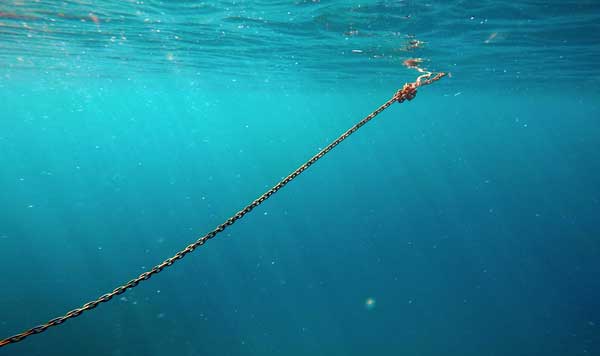
Although the chain enters the water at a steep angle this is the effect of the 250 pounds of chain. This is the effect of the catenary - the weight of the chain makes the 3:1 scope pull pretty much parallel to the bottom at roughly 30 knots of wind force. Note the chain is nearly parallel to the bottom.
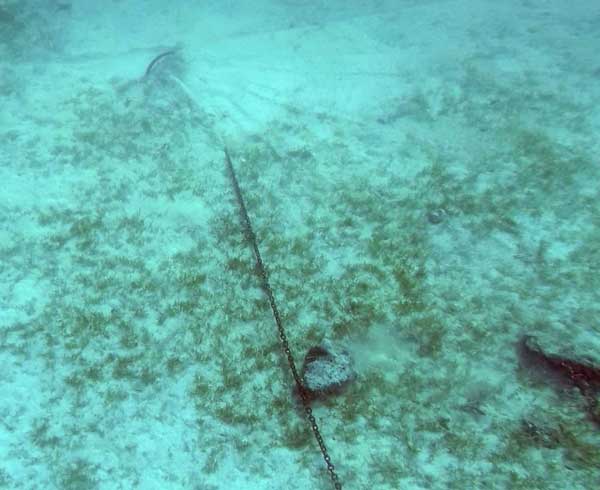
Paul dives down to take a look at it 55 feet underwater.
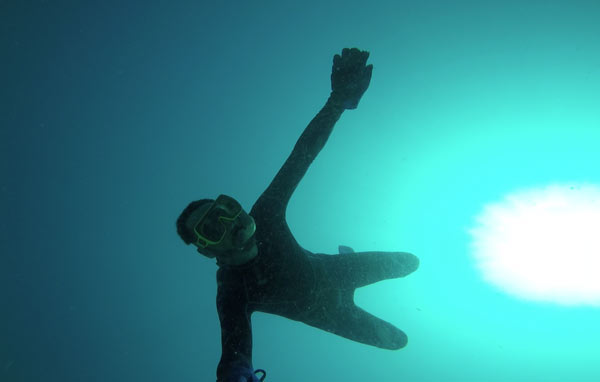
The water is nice and clear for testing here in the British Virgin Islands.
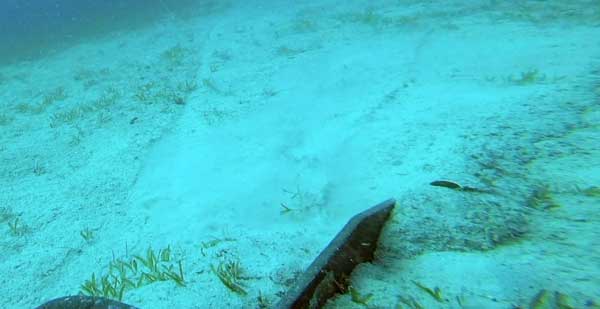
Rocna anchor set perfectly as usual... it is well buried and sitting right way up.
Cultural Differences
Anchoring is a very contentious subject and also seems to differ by culture. In North America many cruisers use a short length of chain with the rest rope. In this case the catenary method described here will not work - you need all-chain for this effect.
In the UK we rarely saw anyone anchoring with rope rode. Everyone uses all-chain rode and in many cases are anchoring in challenging crowded and tidal anchorages. Peter Nielsen of Sail Magazine comments on reducing scope with deeper water “I do agree that shallower water = greater scope. Borne out by various tests over the years. Cruising round the British coast, standard practice was 3:1 scope at HW. Often a 12-15 foot range so scope naturally increased as tide fell. “
Conclusions on Deep Water Anchoring
In normal conditions (not storm force forecast) an all chain rode will allow reduced scope in deep anchorages. We find 3:1 scope to be OK for anchoring in 50 feet of water. Increasing scope to 4:1 or 5:1 will be better and would be a good idea if strong squalls were forecast. Even an increase to 3:5:1 will make the anchor more effective (see Part 2 Crash Test here).
Additional Hints:
- It can be difficult to judge the space to your neighbours since the increased scope means you need to be further away from nearby boats. Try a range-finder app (review to follow) or a laser rangefinder example here
- Use binoculars with a rangefinder (such as our Fujinon 7X50 binos) to judge neighbourly distance.
- Use GPS and Radar to plot nearby boats.
- Ask neighbours how much rode they have out to make sure you will not hit each other.
Additional Reading on Short Scope Anchoring:
Steve Dashew - bigger anchor will allow for shorter scope if you need in deep anchorage (where you most often need it)
Go for a heavy anchor - in any given anchorage a heavier anchor will perform better than a lighter one.
Rocna designer Peter Smith discusses catenary with graphs

Catenary Calculator - give it a try!
Check out anchorages around the world with us aboard Distant Shores
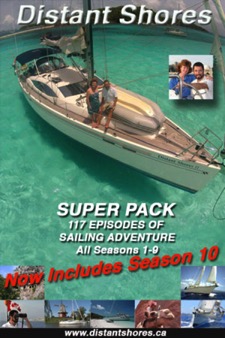
Order the Super Pack on DVD and get Season 1-10 Downloadable.
Order the Super Pack on Vimeo and we will send you the code for Season 10 as a bonus. Email us for details.
